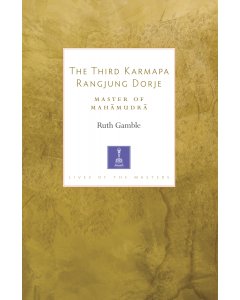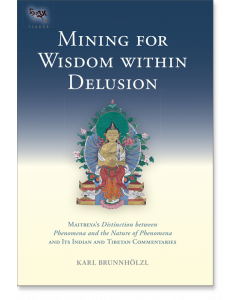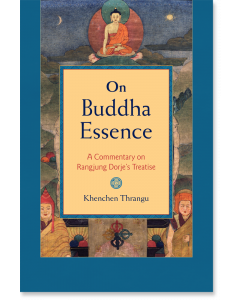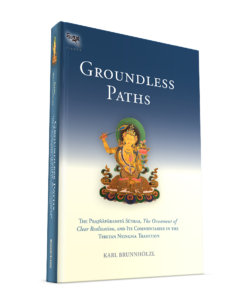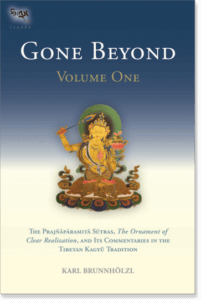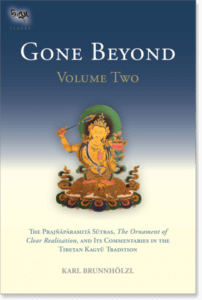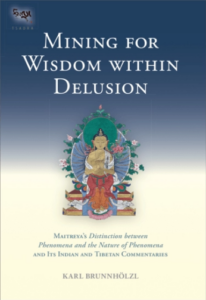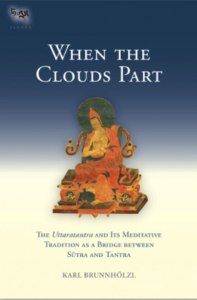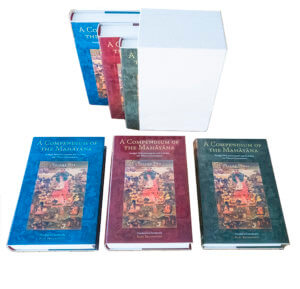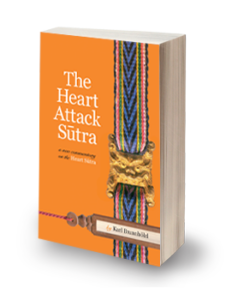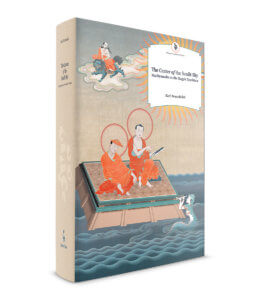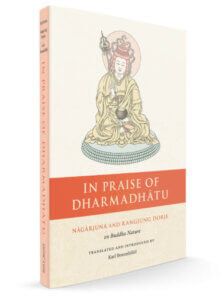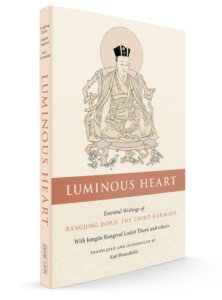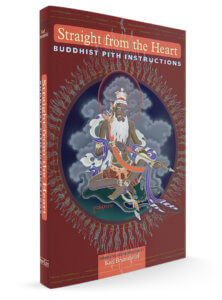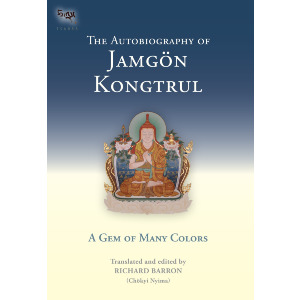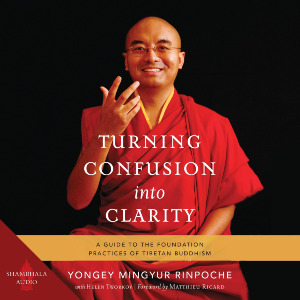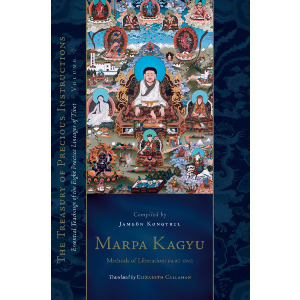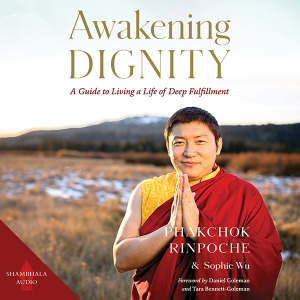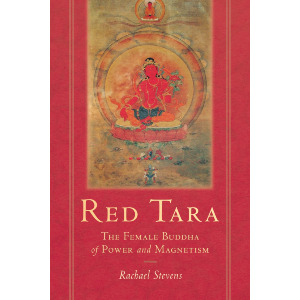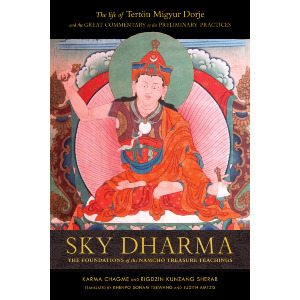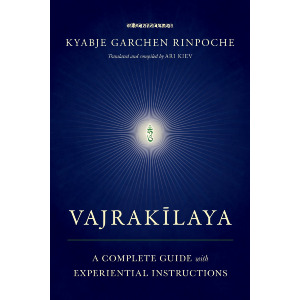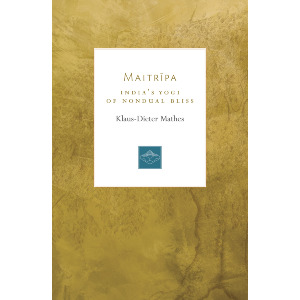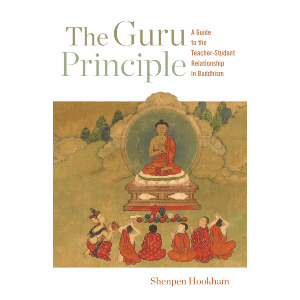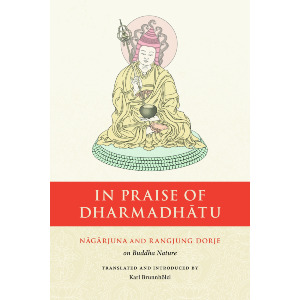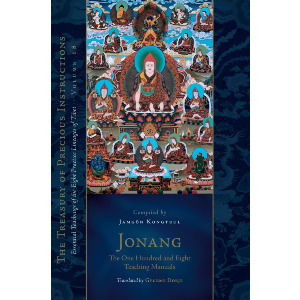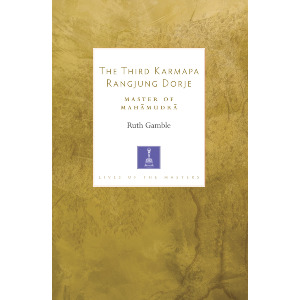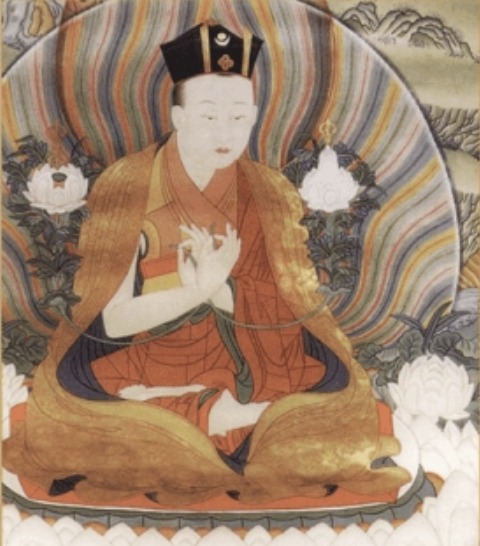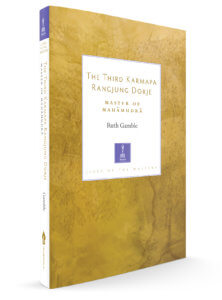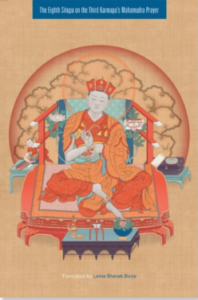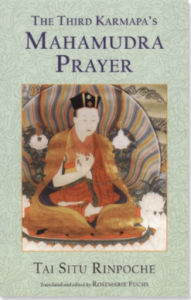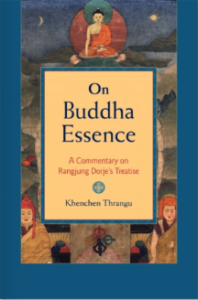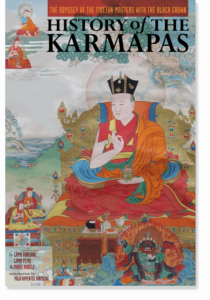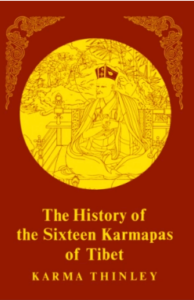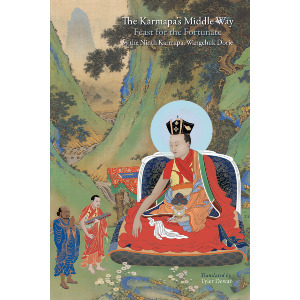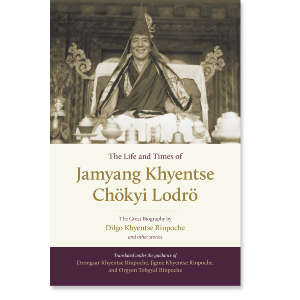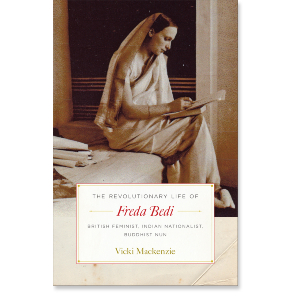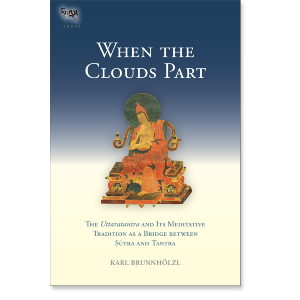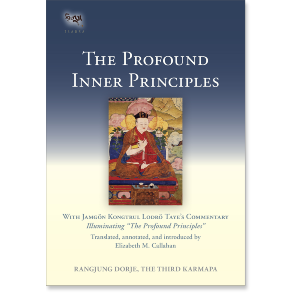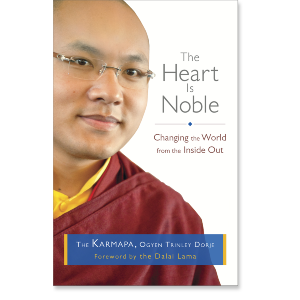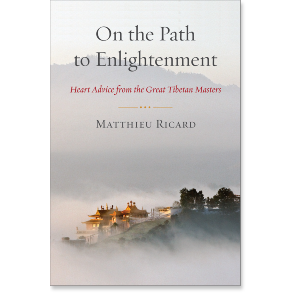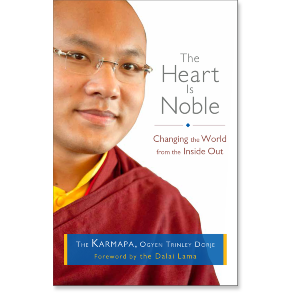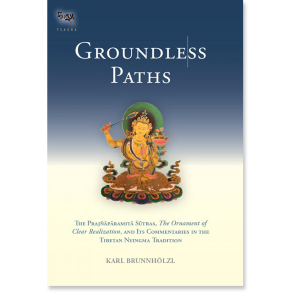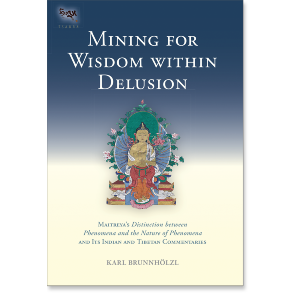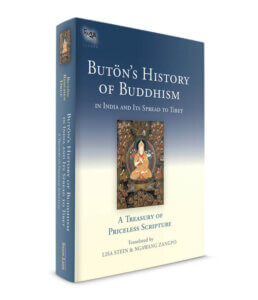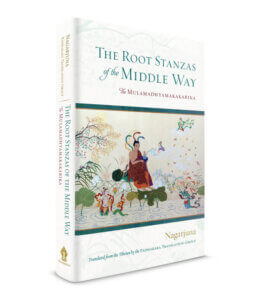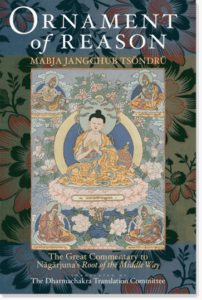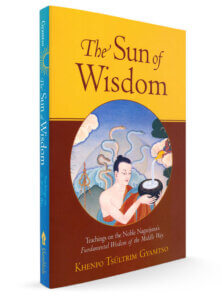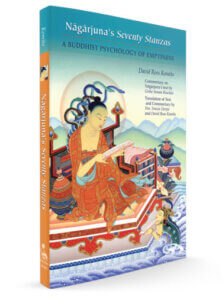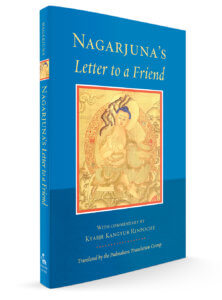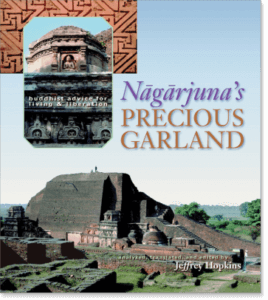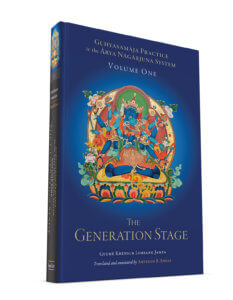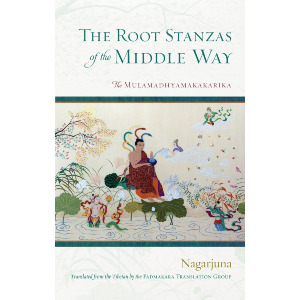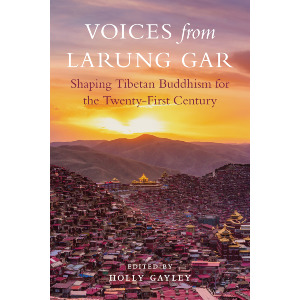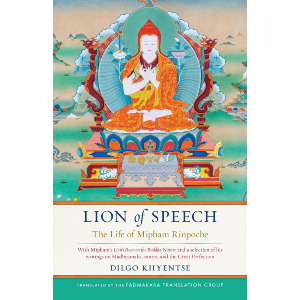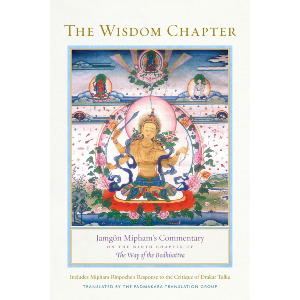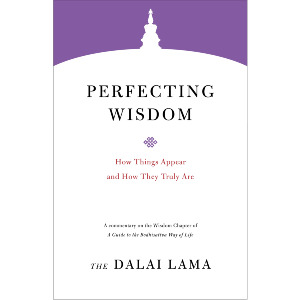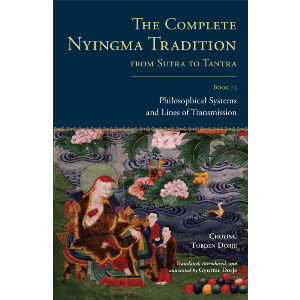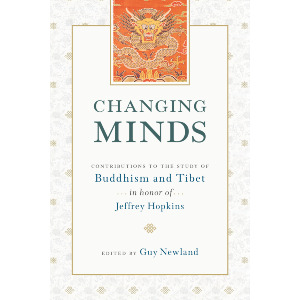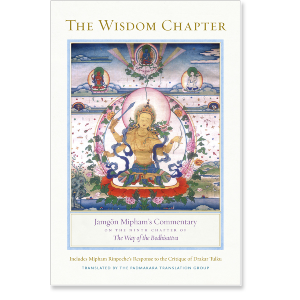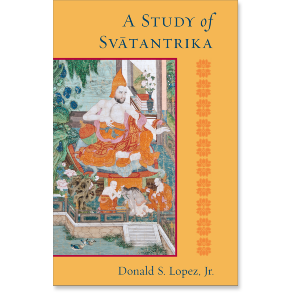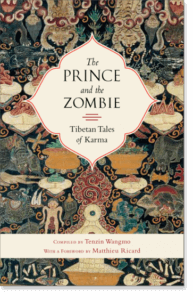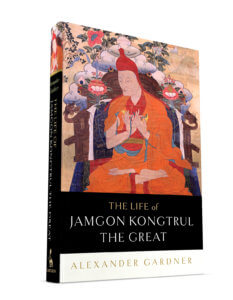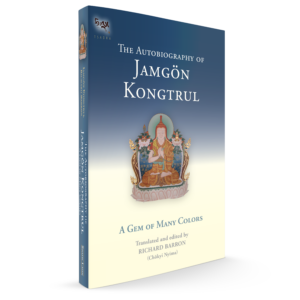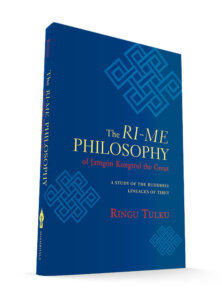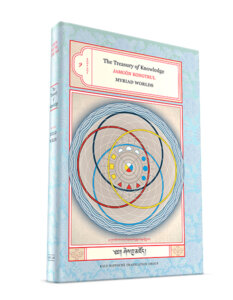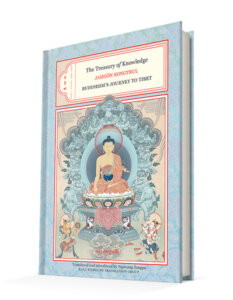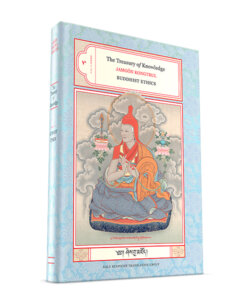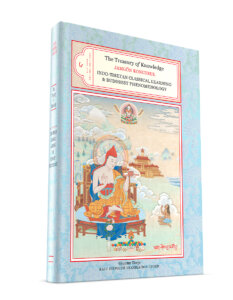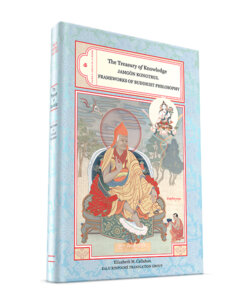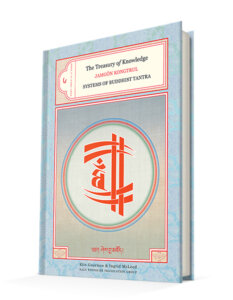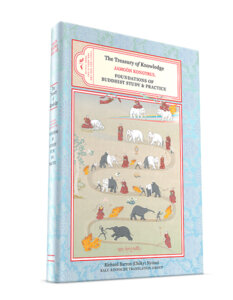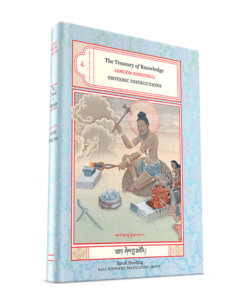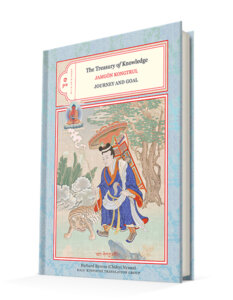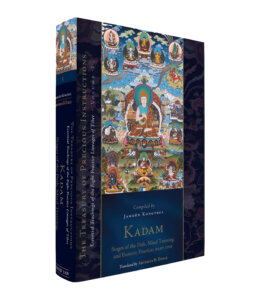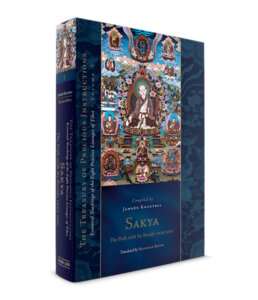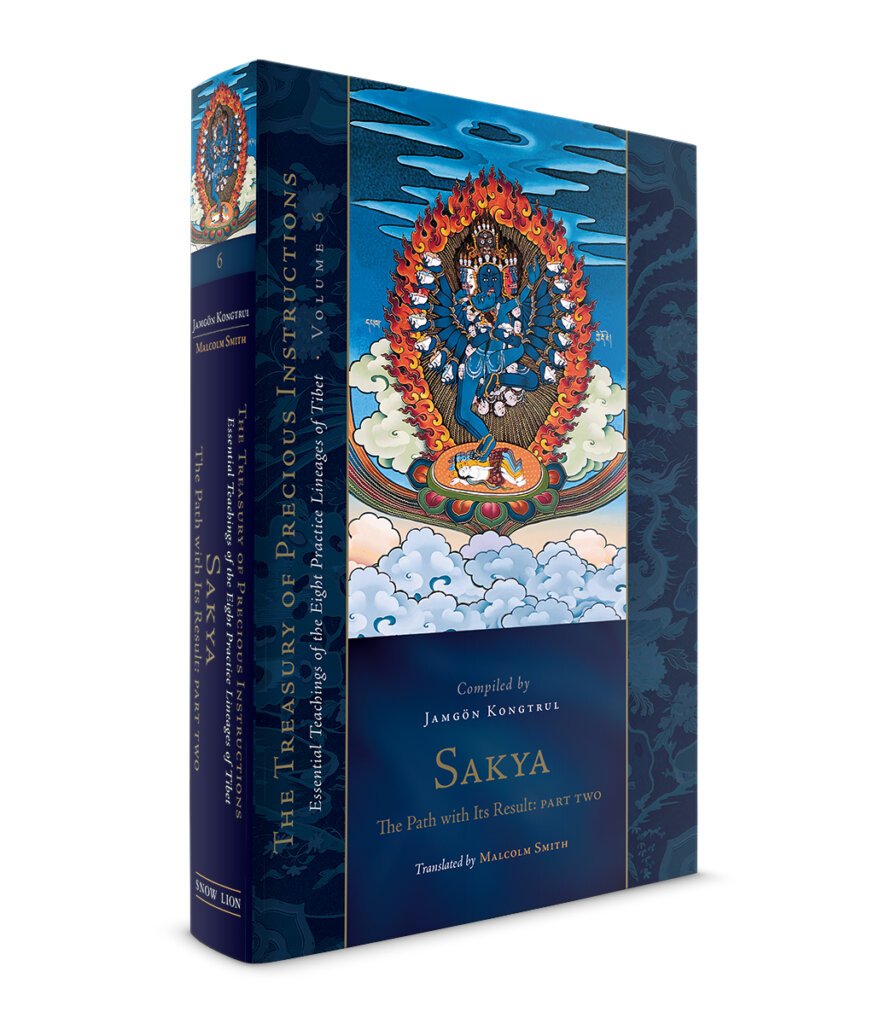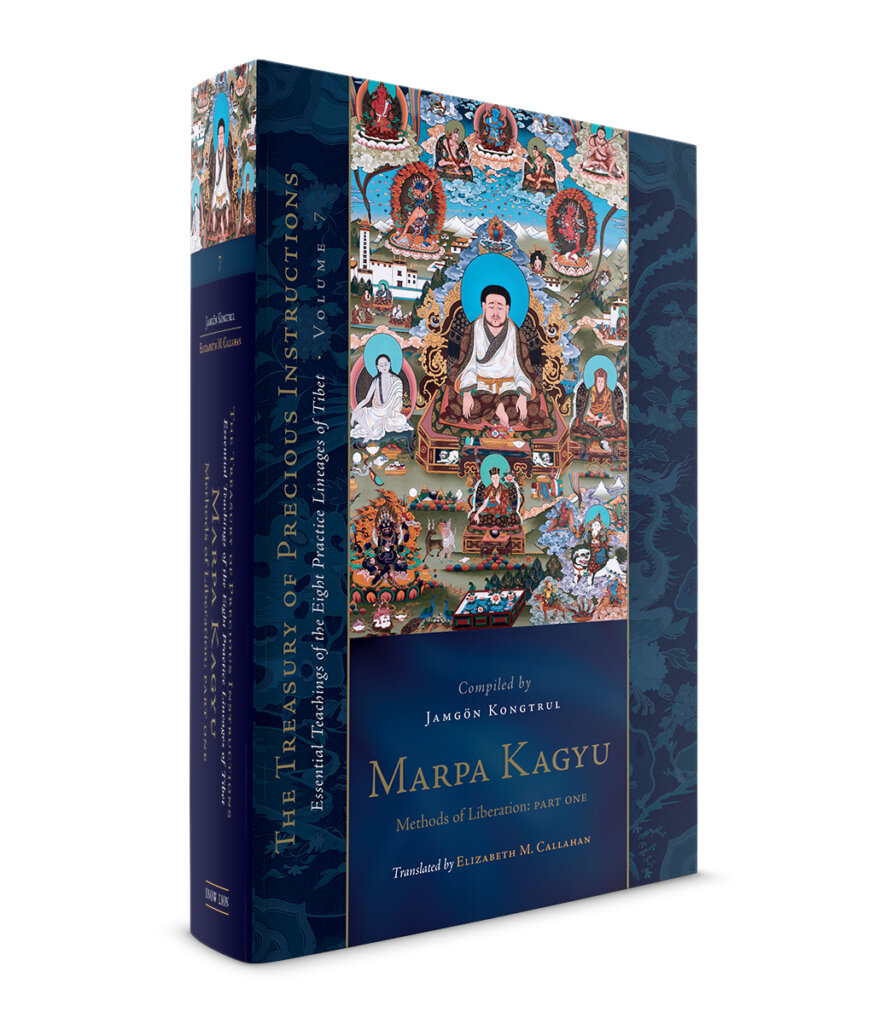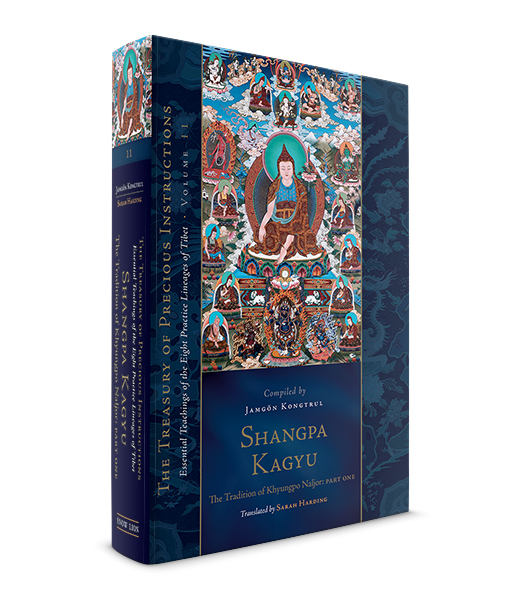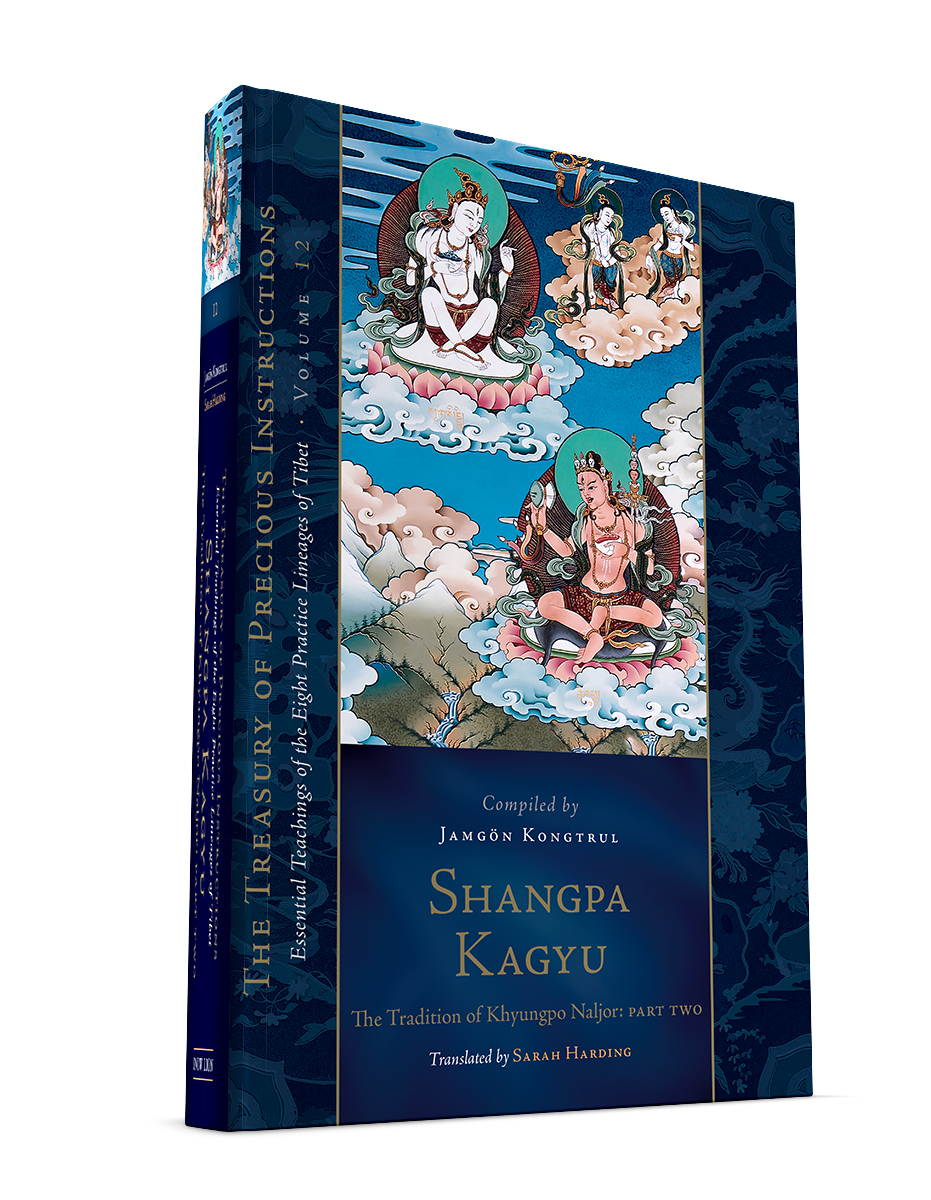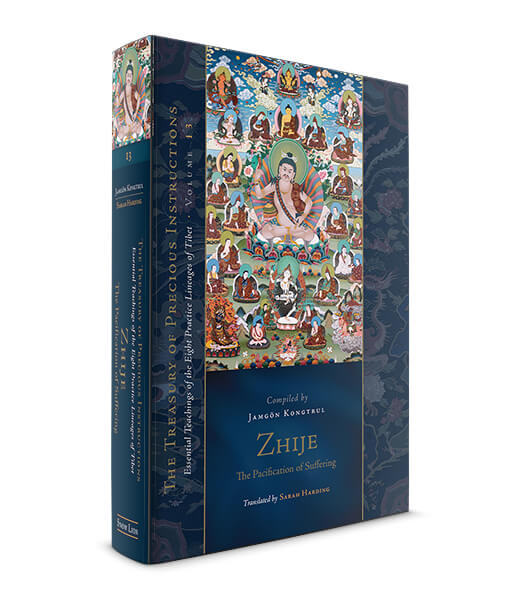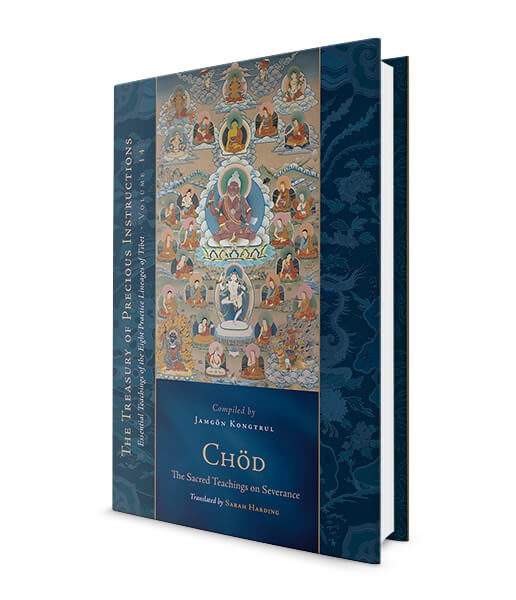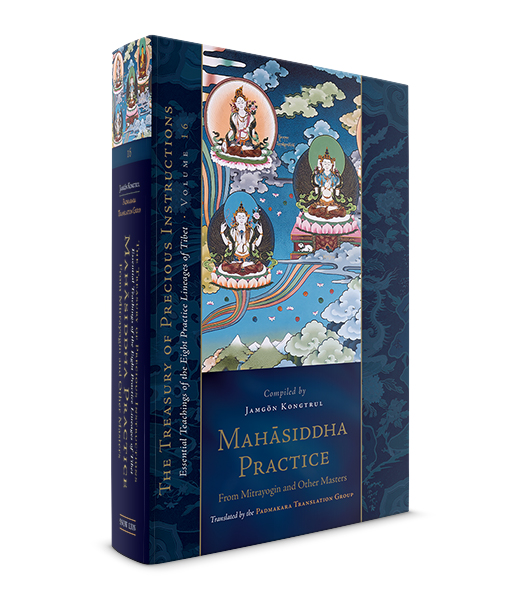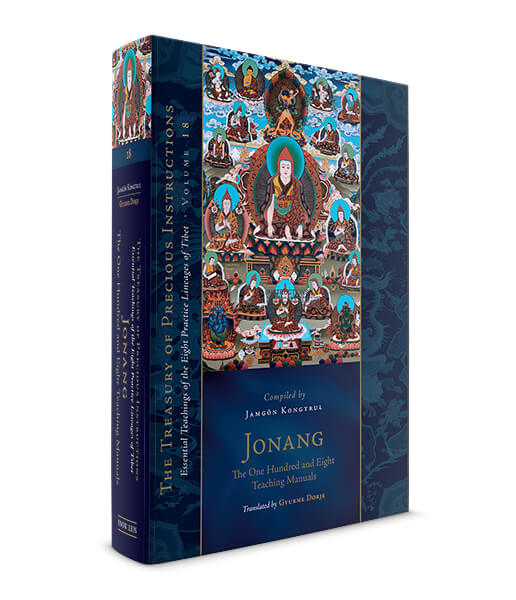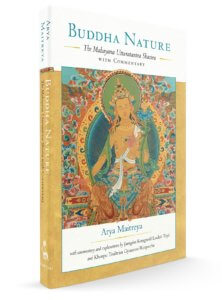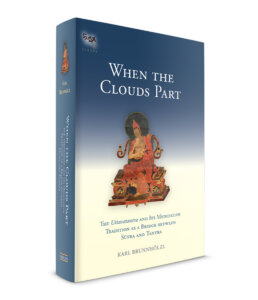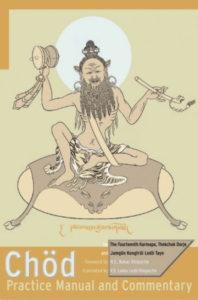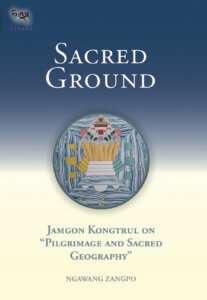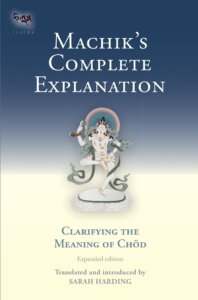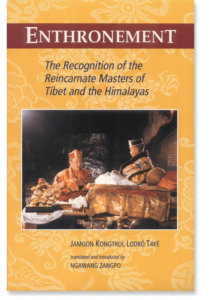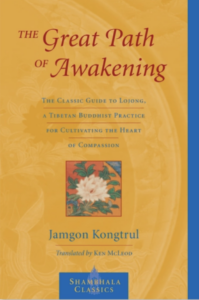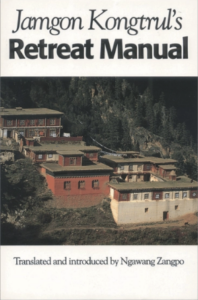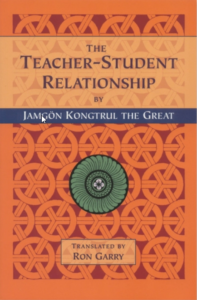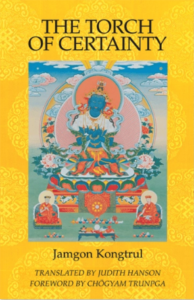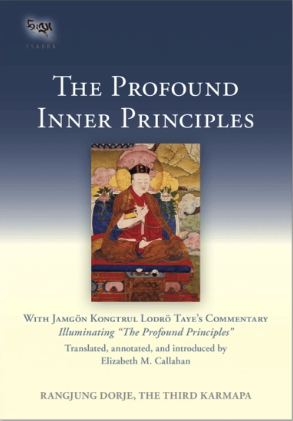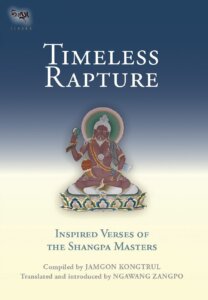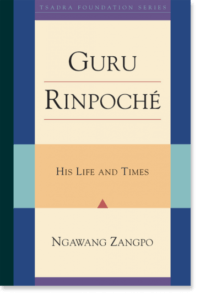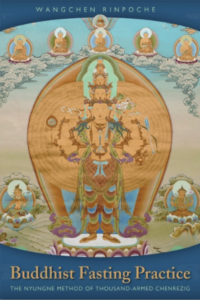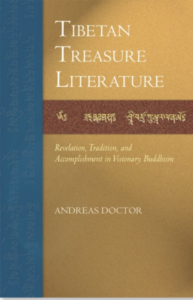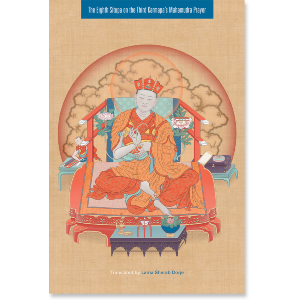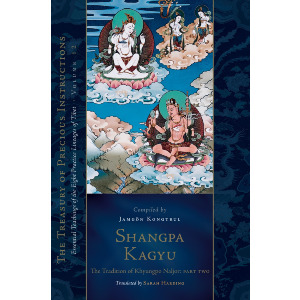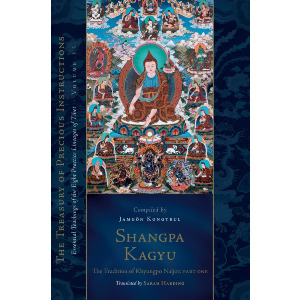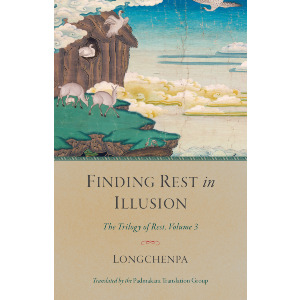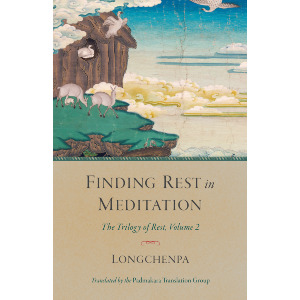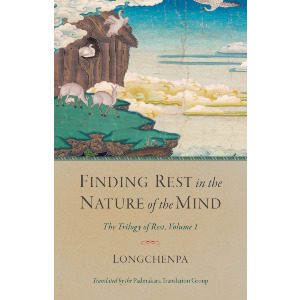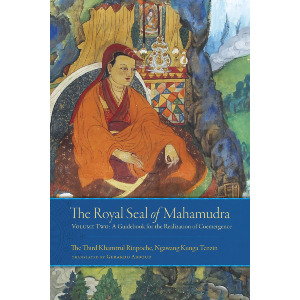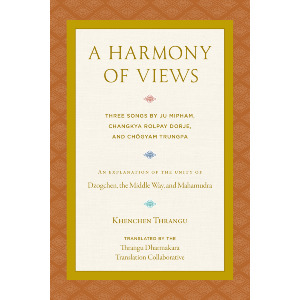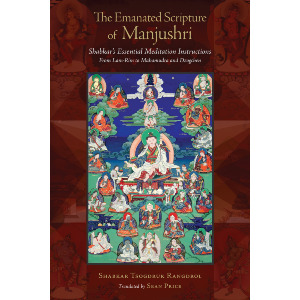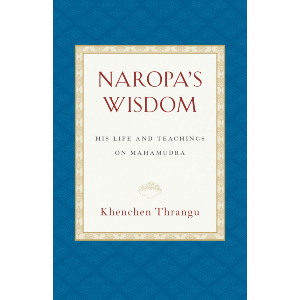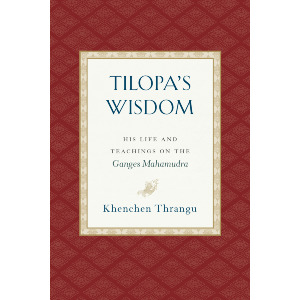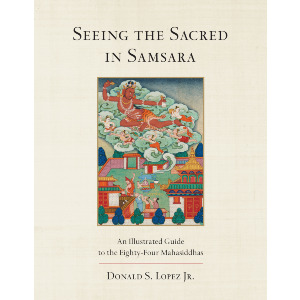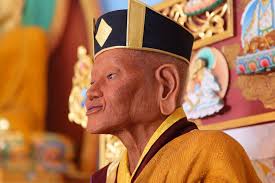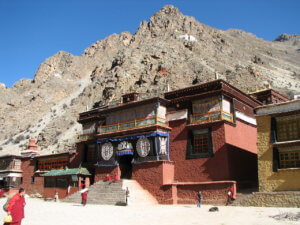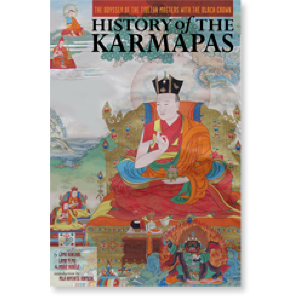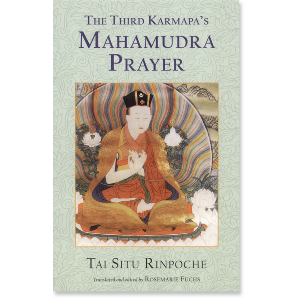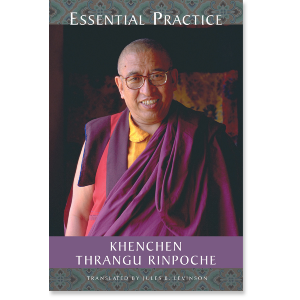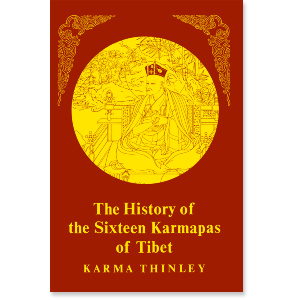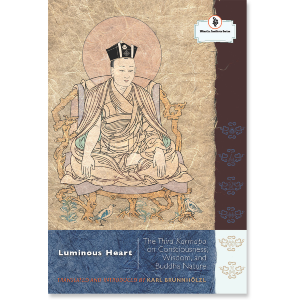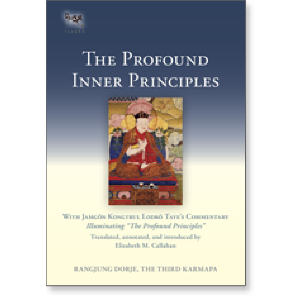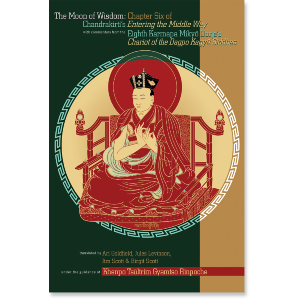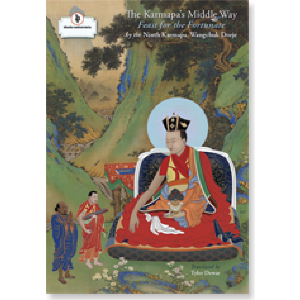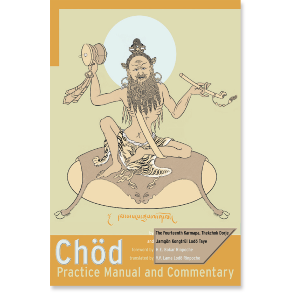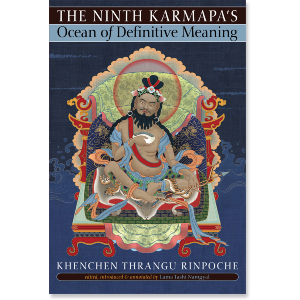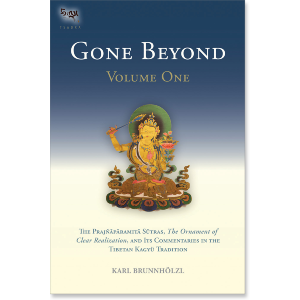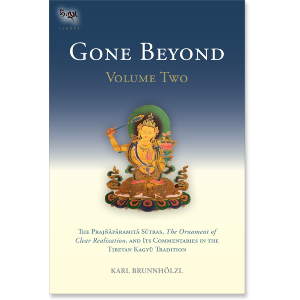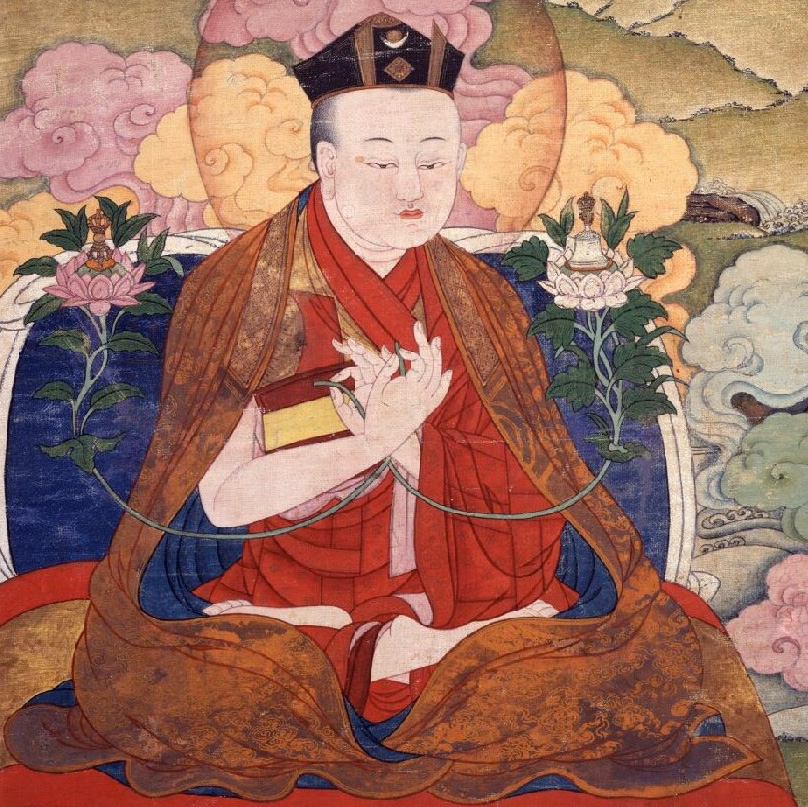

The Third Karmapa
The Third Karmapa Rangjung Dorje (1284–1339) was a scholar of fabled erudition. He mastered texts and teachings across sectarian boundaries, wrote treatises on medicine and astrology, built monasteries, and was spiritual advisor to the last Yuan emperor.
The Third Karmapa
The Third Karmapa Rangjung Dorje (1284–1339) was a scholar of fabled erudition. He mastered texts and teachings across sectarian boundaries, wrote treatises on medicine and astrology, built monasteries, and was spiritual advisor to the last Yuan emperor.
-
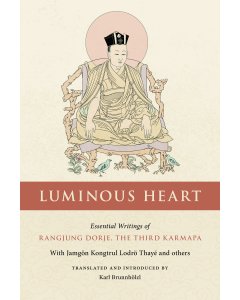 Luminous Heart$32.95- Paperback
Luminous Heart$32.95- PaperbackBy The Third Karmapa
By Jamgon Kongtrul Lodro Taye
Translated by Karl Brunnhölzl -
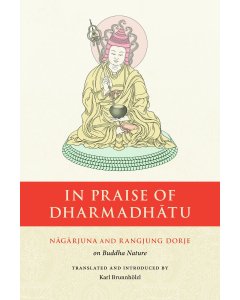 In Praise of Dharmadhatu$29.95- Paperback
In Praise of Dharmadhatu$29.95- PaperbackBy Nagarjuna
Translated by Karl Brunnhölzl
By Rangjung Dorje -
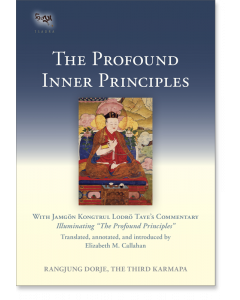 The Profound Inner Principles$49.95- Hardcover
The Profound Inner Principles$49.95- HardcoverBy The Third Karmapa
Translated by Elizabeth M. Callahan -
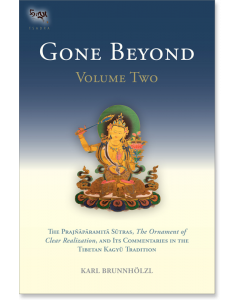 Gone Beyond (Volume 2)$44.95- Hardcover
Gone Beyond (Volume 2)$44.95- HardcoverTranslated by Karl Brunnhölzl
Foreword by The Seventeenth Karmapa
Foreword by Dzogchen Ponlop -
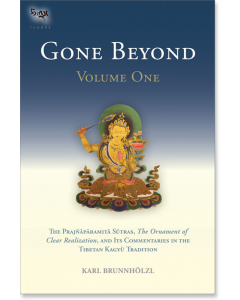 Gone Beyond (Volume 1)$54.95- Hardcover
Gone Beyond (Volume 1)$54.95- HardcoverTranslated by Karl Brunnhölzl
Foreword by The Seventeenth Karmapa
Foreword by Dzogchen Ponlop -
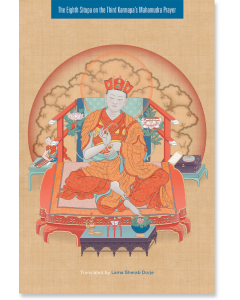 The Eighth Situpa on the Third Karmapa's Mahamudra Prayer$19.95- Paperback
The Eighth Situpa on the Third Karmapa's Mahamudra Prayer$19.95- PaperbackTranslated by Lama Sherab Dorje
-
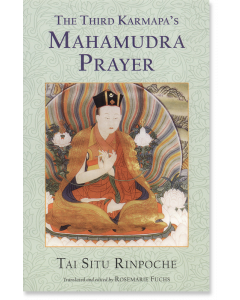 The Third Karmapa's Mahamudra Prayer$17.95- Paperback
The Third Karmapa's Mahamudra Prayer$17.95- PaperbackBy The Twelfth Tai Situpa
Edited by Rosemarie Fuchs
Translated by Rosemarie Fuchs
- Buddhist Academic 4item
- Buddhist Biography/Memoir 1 item
- Buddhist History 1 item
- Buddhist Philosophy 1 item
- Dependent Origination 2item
- Foundation Texts 3item
- Heart Sutra 1 item
- Buddha Nature 5item
- Prajnaparamita 2item
- Deity Practice 1 item
- Five Maitreya Texts 3item
- Kagyu Tradition 9item
- Karma Kagyu 2item
- Karmapas 9item
- Madhyamaka 2item
- Mahamudra 2item
- Sutra 1 item
- Tantra 1 item
- Restricted Texts Requiring Prerequisites 1 item
- Yogacara 4item
GUIDES
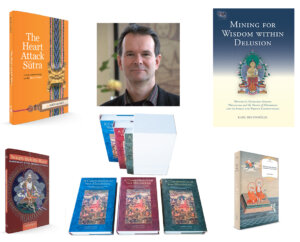
The Works of Karl Brunnhölzl: A Guide for Readers

This guide for readers is dedicated to the works of author, translator, and teacher, Karl Brunnhölzl.
Originally trained as a physician, Karl Brunnhölzl later studied Tibetan language and Buddhist philosophy at the Marpa Institute for Translators and later the Nitartha Institute. Since 1989 he has been a translator and interpreter from Tibetan and English. He is presently involved with the Nitartha Institute as a teacher and translator.
Karl is well known among the Tibetan Buddhist community for his translations of some of the most widely known texts including works by Nagarjuna, Rangjung Dorje, as well as Five Maitreya Texts. Below you'll find an introduction to the selection of works found here at Shambhala Publications.
Texts and Commentary on the Prajñāpāramitā "Perfection of Wisdom" Sutras
The Prajñāpāramitā or "the Perfection of Wisdom" sutras are a collection of Mahāyana Buddhist scripture geared toward realizing the genuine nature of reality. The earliest texts that are included in the collection of Prajñāpāramitā sutras are believed to be from the 1st century BCE. Historically there have been a range of interpretations and schools of thought that derived from the Prajñāpāramitā sutras in India, most notably Madhyamaka and Yogācara, two distinct schools of thought stemming from Nāgārjuna and Asanga, respectively. Additional schools of thought have branched out from Madhyamaka and Yogācara, making their way to different regions of Asia including Japan, Tibet, China, and Korea.
In this reader guide we'll focus on the expansion of these two schools as they were explored in India and Tibet. As a Tibetan translator, interpreter, and practitioner in the Kagyu tradition, Karl Brunnhölzl offers of plethora of knowledge and experience enabling him to translate these complex and often dense philosophical texts from both the Madhyamaka and Yogācara tradition of Buddhism.
Perfection of Wisdom & the Five Maitreya Texts
According to the tradition, the Five Maitreya Texts were presented to Asanga by the bodhisattva Maitreya. These treatise include
1) The Ornament of Clear Realization (Abhisamayālaṃkāra)
2) The Ornament of the Mahayana Sutras (Māhayānasūtrālaṃkāra)
3) Distinguishing the Middle from the Extremes (Madhyāntavibhāga)
4) Distinguishing Phenomena from their Intrinsic Nature (Dharma-dharmatā-vibhāga)
5) The Sublime Continuum (Uttaratantra Śāstra)
Of the above treatise, Karl Brunnhölzl translated The Ornament of Clear Realization along with commentary from different schools of Tibetan Buddhism published as a trilogy (see below). Along the same vein, Brunnhölzl Compendium of Mahayana presents virtually everything anybody might want to know about the Yogācāra School of Mahāyāna Buddhism.
Abhisamayalamkara: The Ornament of Clear Realization
The Abhisamayalamkara summarizes all the topics in the vast body of the prajñaparamita sutras. Resembling a zip-file, it comes to life only through its Indian and Tibetan commentaries. Together, these texts not only discuss the "hidden meaning" of the prajñaparamita sutras—the paths and bhumis of sravakas, pratyekabuddhas, and bodhisattvas—but also serve as contemplative manuals for the explicit topic of these sutras—emptiness—and how it is to be understood on the progressive levels of realization of bodhisattvas. Thus these texts describe what happens in the mind of a bodhisattva who meditates on emptiness, making it a living experience from the beginner's stage up through buddhahood.
Groundless Paths
The Prajnaparamita Sutras, The Ornament of Clear Realization, and Its Commentaries in the Tibetan Nyingma Tradition
Translated by Karl Brunnhölzl
Groundless Paths contains the first in-depth study of the Abhisamayalamkara (the text studied most extensively in higher Tibetan Buddhist education) and its commentaries from the perspective of the Nyingma School of Tibetan Buddhism. This study consists mainly of translations of Maitreya's famous text and two commentaries on it by Patrul Rinpoche. These are supplemented by three short texts on the paths and bhumis by the same author, as well as extensive excerpts from commentaries by six other Nyingma masters, including Mipham Rinpoche. Thus this book helps close a long-standing gap in the modern scholarship on the prajñaparamita sutras and the literature on paths and bhumis in mahayana Buddhism.
Gone Beyond, Vol. 1 & Vol. 2
The Prajnaparamita Sutras, The Ornament of Clear Realization, and Its Commentaries in the Tibetan Kagyu Tradition
Translated by Karl Brunnhölzl
Gone Beyond contains the first in-depth study of the Abhisamayalamkara (the text studied most extensively in higher Tibetan Buddhist education) and its commentaries in the Kagyu School. This study (in two volumes) includes translations of Maitreya's famous text and its commentary by the Fifth Shamarpa Goncho Yenla (the first translation ever of a complete commentary on the Abhisamayalamkara into English), which are supplemented by extensive excerpts from the commentaries by the Third, Seventh, and Eighth Karmapas and others. Thus it closes a long-standing gap in the modern scholarship on the Prajnaparamita Sutras and the literature on paths and bhumis in mahayana Buddhism.
The first volume presents an English translation of the first three chapters of the Abhisamayalamkara and its commentary by the Fifth Shamarpa. The second volume presents an English translation of the final five chapters and its commentary by the Fifth Shamarpa.
In the video below listen to Karl Brunnhölzl discuss the trilogy on the Abhisamayalamkara: Groundless Paths and Gone Beyond Vol. 1 & 2.
Maitreya's Distinction between Phenomena and the Nature of Phenomena
Maitreya's Distinction between Phenomena and the Nature of Phenomena or Dharma-dharmatā-vibhaṅga is one of 13 core texts taught as part of monastic curriculum. The essential point of the text is, as the title entails, help a person distinguish between the illusory pheonemena of samsara and the ultimate reality, the nature of one's mind.
Mining for Wisdom within Delusion
Maitreya's Distinction between Phenomena and the Nature of Phenomena and Its Indian and Tibetan Commentaries
Translated by Karl Brunnhölzl
Maitreya’s Distinction between Phenomena and the Nature of Phenomena distinguishes the illusory phenomenal world of saṃsāra produced by the confused dualistic mind from the ultimate reality that is mind’s true nature. The transition from the one to the other is the process of “mining for wisdom within delusion.” Maitreya’s text calls this “the fundamental change,” which refers to the vanishing of delusive appearances through practicing the path, thus revealing the underlying changeless nature of these appearances. In this context, the main part of the text consists of the most detailed explanation of nonconceptual wisdom—the primary driving force of the path as well as its ultimate result—in Buddhist literature.
The Uttaratantra Śāstra "The Sublime Continuum"
The Uttaratantrashastra also called the Ratnagotravibhāga is another one of the 13 core texts studied in monastic shedras. In short, it is a commentary on the third turning of the wheel and focuses on the essential Buddhanature of all sentient beings.
When the Clouds Part
The Uttaratantra and Its Meditative Tradition as a Bridge between Sutra and Tantra
Translated by Karl Brunnhölzl
“Buddha nature” (tathāgatagarbha) is the innate potential in all living beings to become a fully awakened buddha. This book discusses a wide range of topics connected with the notion of buddha nature as presented in Indo-Tibetan Buddhism and includes an overview of the sūtra sources of the tathāgatagarbha teachings and the different ways of explaining the meaning of this term. It includes new translations of the Maitreya treatise Mahāyānottaratantra (Ratnagotravibhāga), the primary Indian text on the subject, its Indian commentaries, and two (hitherto untranslated) commentaries from the Tibetan Kagyü tradition. Most important, the translator’s introduction investigates in detail the meditative tradition of using the Mahāyānottaratantra as a basis for Mahāmudrā instructions and the Shentong approach. This is supplemented by translations of a number of short Tibetan meditation manuals from the Kadampa, Kagyü, and Jonang schools that use the Mahāyānottaratantra as a work to contemplate and realize one’s own buddha nature.
Additional Resources on the Five Maitreya Texts
The Mahāyānasaṃgraha "A Compendium of the Mahayana"
The Mahāyānasaṃgraha, published here with its Indian and Tibetan commentaries in three volumes, presents virtually everything anybody might want to know about the Yogācāra School of Mahāyāna Buddhism. It discusses in detail the nature and operation of the eight kinds of consciousness, the often-misunderstood notion of “mind only” (cittamātra), dependent origination, the cultivation of the path and its fruition in terms of the four wisdoms, and the three bodies (kāyas) of a buddha.
A Compendium of the Mahayana
Asanga's Mahayanasamgraha and Its Indian and Tibetan Commentaries
Translated by Karl Brunnhölzl
Volume 1 presents the translation of the Mahāyānasaṃgraha along with a commentary by Vasubandhu. The introduction gives an overview of the text and its Indian and Tibetan commentaries, and explains in detail two crucial elements of the Yogācāra view: the ālaya-consciousness and the afflicted mind (klistamanas).
Volume 2 presents translations of the commentary by Asvabhāva and an anonymous Indian commentary on the first chapter of the text. These translations are supplemented in the endnotes by excerpts from Tibetan commentaries and related passages in other Indian and Chinese Yogācāra works.
Volume 3 includes appendices with excerpts from other Indian and Chinese Yogācāra texts and supplementary materials on major Yogācāra topics in the Mahāyānasaṃgraha.
Perfection of Wisdom & Madhyamaka
Prajñāpāramitāhṛdaya "The Heart Sutra"
The Heart Sutra is a classic distillation of the Prajñāpāramitā Sutras, known for the famously stated "Form is emptiness, emptiness is form. Form is no other than emptiness, emptiness is no other than form"—a notable quotation in other Madhyamaka sutras and commentary. Often thought of as radical by some Buddhist thinkers, the Heart Sutra, along with the entire collection of Prajñāpāramitā Sutras pushes the barrier beyond conceptual thought through the doctrine of the two truths (relative and ultimate) pointing to the empty nature of outer and inner phenomena.
Brunnhölzl plays on this radical view of reality with the title of his commentary, The Heart Attack Sutra. To learn more about his choice of title check out the video below.
The Heart Attack Sutra
A New Commentary on the Heart Sutra
by Karl Brunnhölzl
The radical message of the Heart Sūtra, one of Buddhism's most famous texts, is a sweeping attack on everything we hold most dear: our troubles, the world as we know it, even the teachings of the Buddha himself. Several of the Buddha's followers are said to have suffered heart attacks and died when they first heard its assertion of the basic groundlessness of our existence—hence the title of this book. Overcoming fear, the Buddha teaches, is not to be accomplished by shutting down or building walls around oneself, but instead by opening up to understand the illusory nature of everything we fear—including ourselves. In this book of teachings, Karl Brunnhölzl guides practitioners through this 'crazy' sutra to the wisdom and compassion that lie at its core.
Madhyamaka in the Kagyu Tradition
While Brunnhölzl's above works present commentaries from a mix of Kagyu and Nyingma voices, the following works focus specifically on the Kagyu orientation to Madhyamaka.
The Center of the Sunlit Sky
Madhyamaka in the Kagyu Tradition
by Karl Brunnhölzl
Madhyamaka is a potent and universally accessible means of calming our suffering and awakening to our innate wisdom. The Center of the Sunlit Sky artfully rescues this brilliant teaching from its unwarranted reputation for intellectual opacity and reinstates it as a supremely practical tool kit for everyday living. The aim of this book is to take Madhyamaka out of the purely intellectual corner into which it unjustly gets boxed. It is an attempt to show how Madhayamaka actually addresses and works with all of our experiences in life.
The book follows the original Indian sources as well as the standard commentaries on Madhyamaka in the Kagyu School of Tibetan Buddhism. At the same time, these materials are adapted for a contemporary audience, combining the familiar sharpness of Madhyamaka reasonings (launching a massive assault on our cherished belief systems) with exploring the practical relevance of the Madhyamaka way of mind training.
Commentaries from the Third Karmapa, Rangjung Dorje
While the above books make a clearer distinction between the philosophcal traditions of Yogacara and Madhyamaka, Brunnhölzl also has two translations of works by the great Kagyu master Rangjung Dorje, the Third Karmapa. Indicative of the deeper levels of Kagyu philosophy and practice, the union of Yogacara and Madhyamaka represent some of the more subtle teachings of Mahayana Buddhism.
In Praise of Dharmadhatu
Nagarjuna and Rangjung Dorje on Buddha Nature
by Karl Brunnhölzl
Nāgārjuna's works sit at the heart of Mahāyāna Buddhist thought and practice, but he was renowned in Asia not only for his Madhyamaka work, but also his poetic collection of praises, most famously In Praise of Dharmadhatu. This book explores the scope, contents, and significance of Nāgārjuna’s scriptural legacy in India and Tibet, focusing primarily on this seminal work. The translation of Nāgārjuna’s hymn to buddha nature—here called dharmadhatu—shows how buddha nature is temporarily obscured in the experience of ordinary sentient beings, gradually uncovered through the path of bodhisattvas, and finally revealed in full bloom as buddhahood. Included is a translation of the text’s earliest and most extensive commentary by the Third Karmapa, Rangjung Dorje (1284–1339), supplemented by relevant excerpts from all other available commentaries.
Luminous Heart
Essential Writings of Rangjung Dorje, the Third Karmapa
by Karl Brunnhölzl
This extraordinary collection of writings on buddha nature by the Third Karmapa Rangjung Dorje (1284–1339) focuses on the transition from ordinary deluded consciousness to enlightened wisdom, the characteristics of buddhahood, and a buddha’s enlightened activity. The Third Karmapa’s unique and balanced view synthesizes Yogacara Madhyamaka and the classical teachings on buddha nature. Included are commentaries by Jamgön Kongtrul Lodrö Tayé that supplement the view of the Third Karmapa on two fundamental treatises on buddha nature, emphasizing the luminous empty mind of buddha nature as presented by the great Indian masters Maitreya and Asaṅga. For those practicing the sutrayāna and the vajrayāna in the Kagyü tradition, what these texts describe can be transformed into living experience.
Poetry, Song, and "Pith Instructions"
The last book for this reader's guide is a collection of teachings, songs of realization, and advice for practitioners on the path from both Indian and Tibetan masters.
Straight from the Heart
Buddhist Pith Instructions
by Karl Brunnhölzl
Straight from the Heart brings together an inspiring collection of Buddhist teachings, songs of realization, meditation instructions, and enlightened poetry—all chosen for their power to speak directly to the student. Drawn from Indian Mahayana and Vajrayana Buddhism as well as from all four schools of Tibetan Buddhism, some will impress with their beautiful poetry and powerful imagery, others with their profound power of instruction. Still others share personal advice for life that seems to come directly from the mouth of the author, and some serve as immediate and profound practice instructions. Several are just delightfully unconventional, even outrageous, letting in fresh air on petrified views or musty traditions. Most of them are simply unknown precious gems, which deserve a wider audience. Each of the works is preceded by a brief introduction and a short biography of its author. Many of these are legendary accounts of supernatural feats, edifying examples for students on the same spiritual path meant to expand their limited outlook with “mind-blowing” stories. Miraculous deeds, magnificent songs, and pithy instructions distinguish this collection assembled by the Buddhist scholar and translator Karl Brunnhölzl, whose years of work among dharma texts and his skill as a translator yield a rich mine of teachings all chosen for their ability to speak directly to the heart.
Explore More Articles and Reader's Guides
Recent Books Related to the Kagyu Tradition
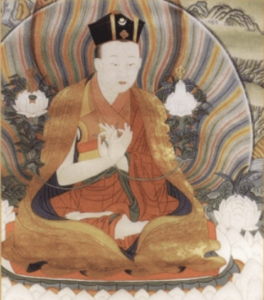
The Third Karmapa, Rangjung Dorje : A Guide for Readers
See More: Lives of the Masters Series | Atisha | Tsongkhapa | Aryadeva | Jamgon Kongtrul | Jigme Lingpa | Patrul Rinpoche | Mipham Rinpoche
The Life of the Third Karmapa Rangjung Dorje (1284-1339 CE)
Rangjung Dorje, the 3rd Karmapa, was the head of Karma Kagyu, a sub-school of the Kagyu tradition. Well known for his teachings on Buddha-nature, his treatises on Dzogchen and Mahamudra introduce the profound meaning of the Vajrayana inner yogas. His life is full of profound experiences, pilgrimage, visions, and extensive study and practice. He composed on a range of topics from doha (songs of realization), astrology, chöd, biography, and scriptural commentaries.
I honor the sacred,
Noble guru's dharmakāya--
In essence as sahaja, great bliss,
The mind of all buddhas, simplicity.
Please inspire me to realize clearly
The variety of illusory play.
"Rangjung Dorje’s story also provided fascinating insights into a very different world from mine, the world of a recognized reincarnate, whose sometime- discomfort, sometime- thriving relationship with his reincarnate status reminded me of not just the Seventeenth Karmapa but of many other people in similar situations. And then there were his visions. Rangjung Dorje’s story and songs may have resonated with me, but they also transported me to a version of the world that was very foreign to me. His stories and songs mixed the common with the otherworldly."
—Ruth Gamble, from the Preface to The Third Karmapa Rangjung Dorje: Master of Mahamudra
The Third Karmapa Rangjung Dorje
Master of Mahamudra
By Ruth Gamble
Dilgo Khyentse Rinpoche inspired Matthieu Ricard to create this anthology by telling him that “when we come to appreciate the depth of the view of the eight great traditions [of Tibetan Buddhism] and also see that they all lead to the same goal without contradicting each other, we think, ‘Only ignorance can lead us to adopt a sectarian view.’” Ricard has selected and translated some of the most profound and inspiring teachings from across these traditions.
The selected teachings are taken from the sources of the traditions, including the Buddha himself, Nagarjuna, Guru Rinpoche, Atisha, Shantideva, and Asanga; from great masters of the past, including Thogme Zangpo, the Fifth Dalai Lama, Milarepa, Longchenpa, and Sakya Pandita; and from contemporary masters, including the Fourteenth Dalai Lama and Mingyur Rinpoche. They address such topics as the nature of the mind; the foundations of taking refuge, generating altruistic compassion, acquiring merit, and following a teacher; view, meditation, and action; and how to remove obstacles and make progress on the path.
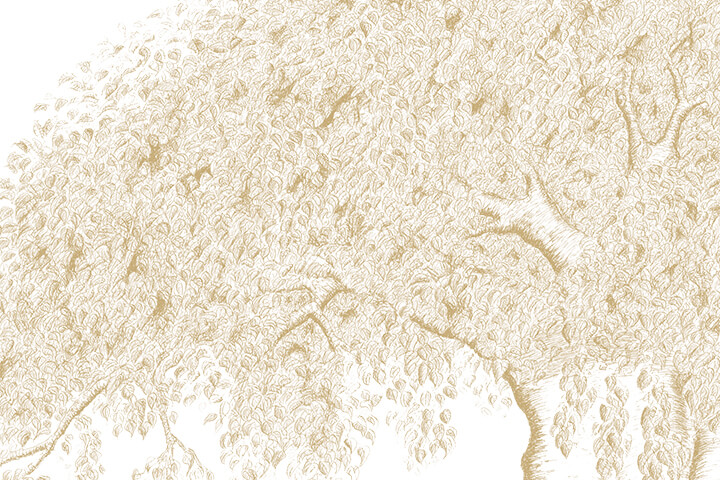
Rangjung Dorje's Aspiration for Mahāmudrā
"The Aspiration for Mahāmudrā is one of Rangjung Dorje’s most famous compositions. It is the subject of several commentaries, including the well- known composition by the Eighth Tai Situ, also known as Situ Paṇchen, Chökyi Jungne (1700–1774), Teachings of the Supreme Siddhas. It is also regularly chanted in Karma Kagyü monasteries, homes, and at other gatherings."
-Ruth Gamble, from The Third Karmapa Ranjung Dorje
When the waves of subtle and gross conceptions subside,
The placid stream of mind naturally comes to rest.
May our ocean of calm abiding be stable and calm and
Free from the silt of turbid drowsiness and lethargy.
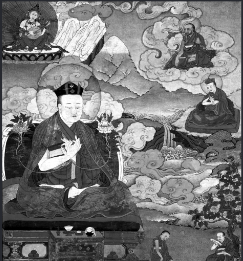
The Eighth Situpa on the Third Karmapa's Mahamudra Prayer
With Commentary by Geshe Sonam Rinchen
Translated by Lama Sherab Dorje (Tulku Sherdor)
Here in one compact volume are all of the stages of instruction on the path of Mahāmudrā. Included are concise and complete formal instructions on the ground, path, and fruition of this penetrating practice. This vast and profound commentary originates with the Eighth Situpa, a remarkable scholar and practitioner who is considered the most accomplished of all the Situ emanations.
The Third Karmapa's Mahamudra Prayer
By XII Khentin Tai Situpa Rinpoche
Edited and translated by Rosemarie Fuchs
The Mahamudra Prayer by the Third Karmapa Rangjung Dorje is a short yet thorough and profound text which presents all the essential points of Mahamudra teaching in terms of view, practice, and fruition. It is a classic that, especially in the tradition of the Karma Kagyu school of Tibetan Buddhism, has been and is widely used whenever a disciple is given a first introduction into Mahamudra. The Third Karmapa shows how to recognize our ultimate potential as a buddha. The short root text is further explained by Khentin Tai Situpa Pema Donyo Nyingje Wangpo, the twelfth incarnation of the Tai Situpa lineage, which is one of the most important lineages of the Kagyu tradition. His deep understanding of Western culture, especially of the Western psychological perspective, allows him to expound the Dharma with a clarity and directness that is truly inspiring.
This book was previously published under the title Lighting the Way.
See more from The Core Teachings of the Dalai Lama series
"Mahamudra is the ultimate nature of mind—the Third Karmapa's Mahamudra Prayer is both an aspiration that all sentient beings realize the mind's true nature, as well as a clear concise and complete explanation of how we can do so. In this book, the brilliant master Tai Situ Rinpoche explains the Mahamudra Prayer to the modern audience directly in English in a way that is both profound and easy for everyone to understand. Such teachings are priceless and all who aspire to realize the luminous clarity that is the basic nature of mind would benefit greatly from reading this book."—Khenpo Tsultrim Gyamtso Rinpoche
Other Works by Rangjung Dorje
In Praise of Dharmadhatu
Nagarjuna and Rangjung Dorje on Buddha Nature
Translated by Karl Brunnhölzl
Nāgārjuna's works sit at the heart of Mahāyāna Buddhist thought and practice, but he was renowned in Asia not only for his Madhyamaka work, but also his poetic collection of praises, most famously In Praise of Dharmadhatu. This book explores the scope, contents, and significance of Nāgārjuna’s scriptural legacy in India and Tibet, focusing primarily on this seminal work. The translation of Nāgārjuna’s hymn to buddha nature—here called dharmadhatu—shows how buddha nature is temporarily obscured in the experience of ordinary sentient beings, gradually uncovered through the path of bodhisattvas, and finally revealed in full bloom as buddhahood. Included is a translation of the text’s earliest and most extensive commentary by the Third Karmapa, Rangjung Dorje (1284–1339), supplemented by relevant excerpts from all other available commentaries.
Luminous Heart
Essential Writings of Rangjung Dorje, the Third with Commentary by Jamgön Kongtrul
Translated by Karl Brunnhölzl
This extraordinary collection of writings on buddha nature by the Third Karmapa Rangjung Dorje (1284–1339) focuses on the transition from ordinary deluded consciousness to enlightened wisdom, the characteristics of buddhahood, and a buddha’s enlightened activity. The Third Karmapa’s unique and balanced view synthesizes Yogacara Madhyamaka and the classical teachings on buddha nature. Included are commentaries by Jamgön Kongtrul Lodrö Tayé that supplement the view of the Third Karmapa on two fundamental treatises on buddha nature, emphasizing the luminous empty mind of buddha nature as presented by the great Indian masters Maitreya and Asaṅga. For those practicing the sutrayāna and the vajrayāna in the Kagyü tradition, what these texts describe can be transformed into living experience.
On Buddha Essence
A Commentary on Rangjung Dorje's Treatise
By Khenchen Thrangu and translated by Peter Alan Roberts
According to Tibetan Buddhist tradition, human beings' true nature, or buddha essence, is the foundation from which all wisdom develops. In order to discover our buddha essence, the meditator needs to know how to meditate correctly and must properly understand the reasons for practicing meditation. We also need training in how the philosophy and practice come together in the development of insight.
In this book—with clarity, warmth, and humor—renowned Tibetan Buddhist meditation master Khenchen Thrangu explains buddha essence and how to discover it in ourselves by drawing on a classical text of the Kagyu lineage by Rangjung Dorje (the third Karmapa). On Buddha Essence will be of interest to practitioners of all schools of Tibetan Buddhism.
Historical Accounts of the Karmapa Line
History of the Karmapas
The Odyssey of the Tibetan Masters with the Black Crown
By Lama Kunsang, Lama Pemo, Marie Aubele, and edited by Maureen Lander
Masters of esoteric knowledge and miraculous practices, the lineage of the Karmapas is the earliest of all the recognized incarnate lineages and is said to descend from the great Indian tantric master Tilopa through a chain that includes Naropa, Marpa, and Milarepa. The Karmapas are distinguished by their black crowns, said to have been woven by dakinis and symbolizing the activity of the buddhas. Unlike other Tibetan Buddhist lineage heads, each Karmapa has specific knowledge of his next reincarnation and leaves behind a "Last Testament," a letter to his disciples describing the place and circumstances of their future rebirth, the name of their parents, and so on. At a very young age, each successive incarnation is often able to recognize himself as the Karmapa. In their recounting of the histories of the seventeen Karmapas, the authors reveal the universal and marvelous concealed in the everyday world. Their lively account peppered with anecdotes is the most comprehensive in the West on this subject, with information from Tibetan, Chinese, Mongolian, French, and English sources.
The Karmapa is the spiritual leader of the Karma Kagyu sect of Tibetan Buddhism. Rangjung Rigpe Dorje was the sixteenth of the line which began with Dusum Khyenpa, the first Karmapa, in the twelfth century. Karma Thinley presents the biographies of the first sixteen Karmapas, based on his translations from numerous Tibetan sources. These biographies are not only histories of the training and teaching of these great teachers; they are also inspirational texts used to cultivate devotion in the practitioner. Accompanying the text are sixteen line drawings, based on the thangka paintings of the Karmapas at Rumtek monastery, the seat of the present Karmapa.
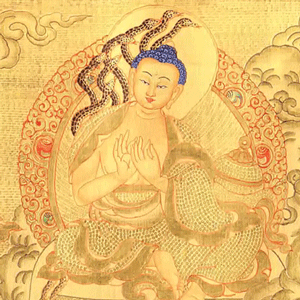

Nagarjuna
Nagarjuna
circa 150 – c. 250 CE
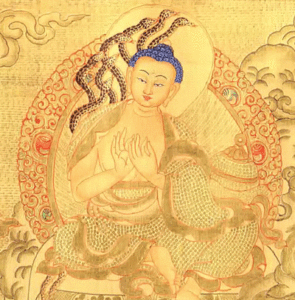
Of Nagarjuna’s life, we know almost nothing. He is said to have been born into a Brahmin family in the south of India around the beginning of the second century CE. He became a monk and a teacher of high renown and exerted a profound and pervasive influence on the evolution of the Buddhist tradition in India and beyond. Much of his life seems to have been spent at Sriparvata in the southern province of Andhra Pradesh, at a monastery built for him by king Gotamiputra, for whom he composed the Suhrllekha, his celebrated Letter to a Friend.
Nagarjuna is intimately associated with the Prajnaparamita sutras, the teachings on the Perfection of Wisdom, the earliest-known examples of which seem to have appeared in written form around the first century BCE, thus coinciding with the emergence of Mahayana, the Buddhism of the Great Vehicle.
It is recorded in the Pali Canon that the Buddha foretold the disappearance of some of his most profound teachings. They would be misunderstood and neglected, and would fall into oblivion. “In this way,” he said, “those discourses spoken by the Tathāgata that are deep, deep in meaning, supramundane, dealing with emptiness, will disappear.” There is no knowing whether on that occasion he was referring to the Perfection of Wisdom, but it is certain that the earliest exponents of the Mahayana believed that, with the Prajnaparamita scriptures, they were recovering a profound and long-lost doctrine. Nagarjuna seems to have been deeply implicated in this rediscovery. Questions of historicity aside, the story that he brought back seven volumes of the Prajnaparamita sutras from the subterranean realm of the nagas, where they had been preserved, conveys a clear message. In the eyes of Nagarjuna’s contemporaries and of later generations, the appearance of the Prajnaparamita sutras marked a new beginning in the history of Buddhism, and yet the teachings they contained were not innovations. And in their interpretation and propagation, Nagarjuna played a crucial role.
-Excerpted from the "Translator's Preface," The Root Stanzas of the Middle Way translated by Padmakara Translation Group
Jump to sections on this page:
Nagarjuna's Life | Madhayamaka & Reasoning | Praises
Advice | Tantra | Recent Works on Madhyamaka | Other Works and Resources

Nagarjuna's Life
A more comprehensive biography of Nagarjuna can be found in Butön's History of Buddhism in India and Its Spread to Tibet. A fourteenth-century Tibetan classic that serves as an excellent introduction to basic Buddhism as practiced throughout India and Tibet and describes the process of entering the Buddhist path through study and reflection.
What follows is a brief composite biography from a variety of sources including Butön Rinchen Drup's biography of Nagarjuna.
Overcoming his fated death
Nagarjuna was born to a Brahmin family in Vidarbha in present-day Maharashtra, India. Predicted to have a short life, he avoided an early demise by taking ordination at Nalanda monastery with Rahulabhadra, identified in some accounts as being the mahasiddha Saraha and in others as being the abbot of Nalanda; regardless, he is best known for his works in praise of Prajñaparamita. With an ordination name of Sriman, Nagarjuna undertook thorough studies of Buddhist teachings and became successful in defeating both Buddhists and non-Buddhists in debate.
Prajñaparamita sutras
Several nagas heard Sriman's teaching and subsequently invited him down into their realm, from which he later brought back special naga clay that was used in the construction of many temples and stupas. He also brought back, most famously, important Prajñaparamita sutras. Thenceforth he became known as Nagarjuna.
Butön describes the meaning of the name beautifully:
Naga signifies birth from the basic space of phenomena, abiding in neither the extreme of eternalism or nihilism, mastery over the vault of precious scriptures, and being endowed with the view that burns and illuminates. Arjuna signifies one who has procured worldly power. Thus, he is named Arjuna because he governs the kingdom of the doctrine and subdues the hosts of faulty enemies. Taken together, these two parts form the name "Nagarjuna."
Nagarjuna's activities were vast; his better-known accomplishments include the building of two structures in Bodhgaya- the stone fence around the Vajra Seat beneath the Bodhi tree and the stupa that sits atop the Mahabodhi Temple - as well as the wall around the great Dhanyakataka Stupa at Amaravati in present-day Andhra Pradesh.
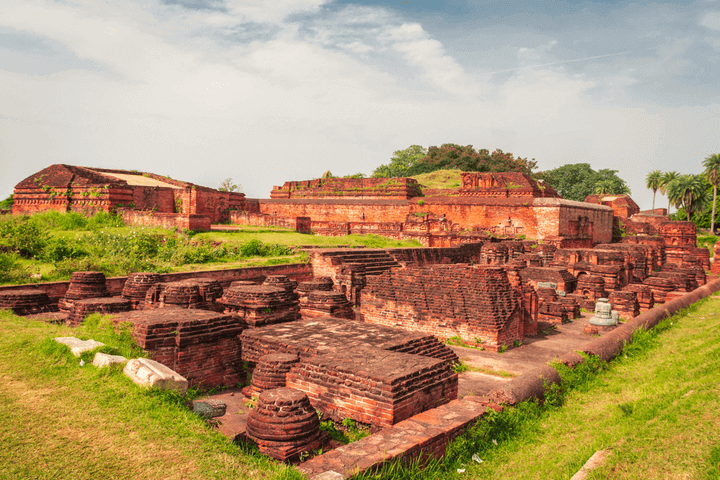
Karma at work
Nagarjuna passed away when he offered his head to a greedy prince who thought he could ensure his own long life by killing Nagarjuna. No blade would cut Nagarjuna, but he told the prince that in a past life he had killed an insect with a blade of kusha grass, so his head could be cut off with a blade of that grass which the prince then did.
It is believed that Nagarjuna's head and body were separated but do not decay and over time move closer together. Once they rejoin, his activity will continue.
Nagarjuna's Texts
The Tibetan Tengyur ascribes about one hundred eighty texts on both the sutras and tantras to him. There is a lot of scholarly debate about what Nagarjuna did and did not actually write, which is outside the scope of this article. Instead, we will focus on the major works widely attributed to him that are available in English.
His treatises are divided in various ways. Mabja Jangchub Tsondru divides them into three groups:
- Those belonging to the Causal Vehicle of Characteristics
- Those belonging to the Resultant Vehicle of Secret Mantra
- Those that show the two above to be identical in meaning
A bit arbitrarily, we will follow another traditional division which groups the treatises as follows: works on reasoning, praises, and advice. This schema ignores the large body of work on tantra and medicine, but most of what is available in English is included in these three groupings.
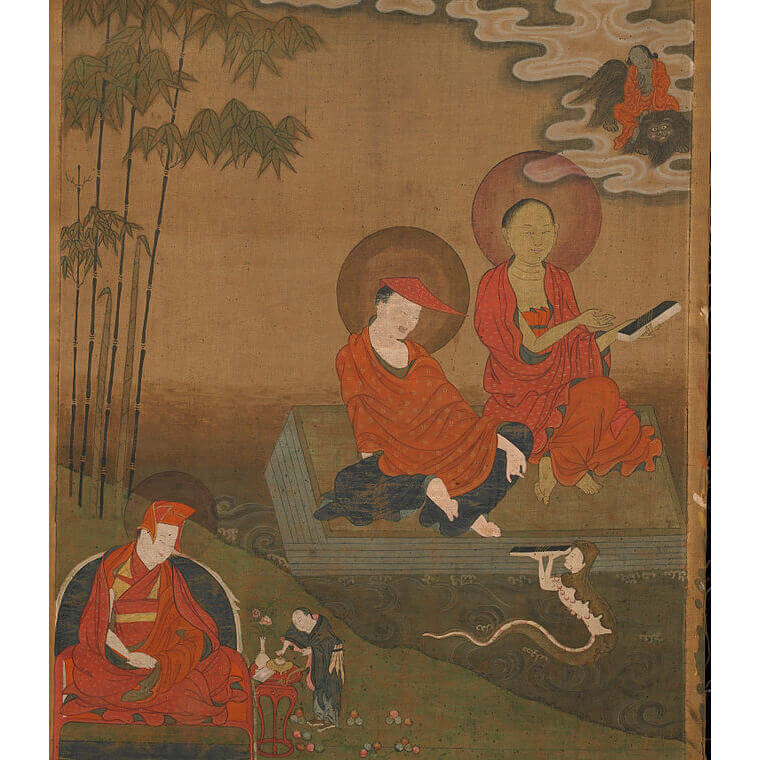
Nagarjuna on Madhyamaka & Reasoning
To him who taught that things arise dependently,
Not ceasing, not arising,
Not annihilated nor yet permanent,
Not coming, not departing,
Not different, not the same:
The stilling of all thought, and perfect peace:
To him, the best of teachers, perfect Buddha, I bow down.
The above verse is from Nagarjuna's famed Root Stanzas of the Middle Way—by far his most widely studied text.
The Root Stanzas of the Middle Way
This volume presents a new English translation of the founding text of the Madhyamaka (Middle Way) school of Mahayana Buddhism, Nagarjuna’s Root Stanzas of the Middle Way (Mulamadhyamakakarika) and includes the Tibetan version of the text. The Root Stanzas holds an honored place in all branches of Tibetan Buddhism, as well as in the Buddhist traditions found in China, Japan, and Korea, because of the way it develops the seminal view of emptiness (shunyata), which is crucial to understanding Mahayana Buddhism and central to its practice. It is prized for its pithy and pointed arguments that show that things lack intrinsic being and thus are “empty” (shunya). They abide in the Middle Way, free from the extremes of permanence and annihilation.
This translation was done following the commentary by Mipham Rinpoche, thus appealing to a living tradition that stretches back unbroken to the Tibetan translators and through their Sanskrit mentors to Nagarjuna himself.
The present work contains Nagarjuna's verses on the Middle Way accompanied by Mabja Jangchub Tsöndrü's famed commentary, the Ornament of Reason. Active in the twelfth century, Mabja was among the first Tibetans to rely on the works of the Indian master Candrakirti, and his account of the Middle Way exercised a deep and lasting influence on the development of Madhyamaka philosophy in all four schools of Buddhism in Tibet. Sharp, concise, and yet comprehensive, the Ornament of Reason has been cherished by generations of scholar-practitioners. The late Khunu Lama Tenzin Gyaltsen Rinpoche, a renowned authority on the subject, often referred to this commentary as "the best there is." A visual outline of the commentary has been added that clearly shows the structure of each chapter and makes the arguments easier to follow.
Hardcover | eBook
$27.99 - eBook
Paperback | eBook
$24.95 - Paperback
The Sun of Wisdom: Teachings on the Noble Nagarjuna's Fundamental Wisdom of the Middle Way
by Khenpo Tsultrim Gyamtso
An excellent contemporary commentary on the Mulamadhyamakakarika is Khenpo Tsultrim Gyamtso's The Sun of Wisdom. Focusing on the most important root verses, it is a very accessible entryway into this fundamental but challenging text.
As Khen Rinpoche says,
All the verses in this book are excellent supports for developing your precise knowledge of genuine reality through study, reflection, and meditation. You should recite them as much as possible, memorize them, and reflect on them until doubt-free certainty in their meaning arises within. Then you should recall their meaning again and again, to keep your understanding fresh and stable. Whenever you have time, use them as the support for the practices of analytical and resting meditation. If you do all of this, it is certain that the sun of wisdom will dawn within you, to the immeasurable benefit of yourselves and others.
Paperback | eBook
$27.95 - Paperback
by David Ross Komito and Geshe Sonam Rinchen
Nagarjuna's Shunyatasaptati, or Seventy Stanzas on Emptiness (there are actually seventy-three), is an expansion of the seventh section of the Root Verses, "Analysis of Characteristics of the Conditioned," that addresses some questions people had about the presentation of conditioned phenomena and whether that conflicted with sutra teachings. As is often the case, the answer lies in the difference between the conventional point of view of beings and how things actually are.
Additional Texts on Reasoning by Other Publishers
Of the remaining texts in this category,
- Nagarjuna's Yuktisastika, or Sixty Verses on Reasoning, has been translated by Joseph Loizzo as Nagarjuna's Reason Sixty and is available from Columbia University Press.
- The Vigrahavyavartani, or Refutation of Objections, was translated most recently by Jan Westerhoff and published as The Dispeller of Disputes by Oxford University Press.
- And lastly, Nagarjuna's Vaidalyaprakarana is included in Nagarjuniana by Christian Lindtner, published by Motilal Banarsidass.
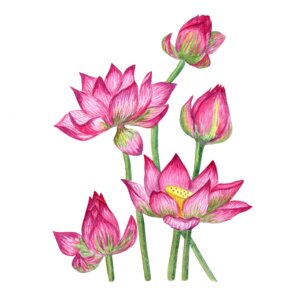
Nagarjuna's Praises
The Tibetan Tengyur identifies eighteen works of praise by Nagarjuna, and this praise is generally directed at Buddha Shakyamuni.
Paperback | eBook
$29.95 - Paperback
Translated and introduced by Karl Brunnholzl
While most of Nagarjuna's praises are directed to Buddha Shakyamuni, the main work of Nagarjuna's praises we have in English is the Dharmadhatustava, translated as In Praise of Dharmadhatu, and this work directs praise instead at the ultimate nature of mind. Karl Brunnhölzl's translation, which includes an in-depth introduction to Nagarjuna and his works in general and this one specifically, also contains a commentary by the Third Karmapa Rangjung Dorje.
The text shows how our buddha nature is obscured by stains but also how the stains can be removed by following the path of the Mahayana and can be fully revealed as buddhahood. Rangjung Dorje's commentary is also of particular interest because even though he is known for his shentong views, this commentary shows how his actual understanding is far more subtle than scholars have sometimes supposed and is in fact an elegant synthesis of the two great streams of the Mahayana, Madhyamaka, and Yogacara.
Paperback | eBook
$49.95 - Paperback
Translated and introduced by Karl Brunnholzl
Three other praises of Nagarjuna's are included in the collection Straight from the Heart, also translated and introduced by Karl Brunnhölzl</a>. Interestingly, in these praises, Nagarjuna often refers to buddhahood in positive terms, in contrast to much of his other work, which deconstructs any possibility of phenomena truly existing. As Brunnhölzl points out, despite there being nothing to pinpoint in the dharmadhatu as the nature of the mind, it can still be experienced directly and personally in a non-referential way. In other words, enlightenment is not some empty, dark nothingness, but wide-awake awareness of mind completely free from reference points.
Nagarjuna's Advice
There are seven texts included in the advice category. The two most famous are the Suhrllekha, or Letter to a Friend, and the Ratnavali, or Nagarjuna's Precious Garland: Buddhist Advice for Living and Liberation.
Paperback | eBook
$24.95 - Paperback
Nagarjuna's Letter to a Friend: With Commentary by Kangyur Rinpoche
Translated by the Padmakara Translation Group
Letter to a Friend is a set of verses of advice to a king whose identity is uncertain but who was most likely one of a number of kings in present-day Andhra Pradesh. There are several translations of Letter to a Friend, the most recent one being by the Padmakara Translation Group, which includes a commentary by Kyabje Kangyur Rinpoche.
The 123 verses are some of the most frequently quoted lines in all of Tibetan Buddhism and are taught often to this day. The text covers the entire Mahayana path, fusing daily conduct with the framework of stages that lead beings to fully enlightened buddhahood. It makes the entire path totally accessible to laypeople, demonstrating how to completely immerse oneself in the spiritual life while still living in society.
Paperback | eBook
$27.95 - Paperback
Translated by Jeffrey Hopkins
Precious Garland has been categorized by some as belonging among Nagarjuna's works on reasoning, but more traditionally it is part of the advice collection.
In the Precious Garland, he offers intimate counsel on how to conduct one's life and how to construct social policies that reflect Buddhist ideals. The advice for personal happiness is concerned first with improving one's condition over the course of lifetimes, and then with release from all kinds of suffering, culminating in Buddhahood. Nagarjuna describes the cause and effect sequences for the development of happiness within ordinary life, as well as the practices of wisdom, realizing emptiness, and compassion that lead to enlightenment. He describes a Buddha's qualities and offers encouraging advice on the effectiveness of practices that reveal the vast attributes of Buddhahood. In his advice on social and governmental policy, Nagarjuna emphasizes education and compassionate care for all living beings. He also objects to the death penalty. Calling for the appointment of government figures who are not seeking profit or fame, he advises that a selfish motivation will lead to misfortune. The book includes a detailed analysis of attachment to sensual objects as a preparation for realization of the profound truth that, when realized, makes attachment impossible.
Nagarjuna on Tantra
The one work we have is not actually by Nagarjuna but the basis for it is Nagarjuna's Piṇḍīkramaḥ and the Sūtramelāpakam.
Guhyasamaja Practice in the Arya Nagarjuna System, Volume One: The Generation Stage
by Gyumé Khensur Lobsang Jampa, translated by Artemus Engle
The Guhyasamāja Tantra is one of the Unexcelled Yoga Tantras of Vajrayana Buddhism. In the initial, generation-stage practice, one engages in a prescribed sequence of visualizations of oneself as an enlightened being in a purified environment in order to prepare one’s mind and body to engage in the second stage: the completion stage. The latter works directly with the subtle energies of one’s mind and body and transforms them into the enlightened mind and body of a buddha. In this book, Gyumé Khensur Lobsang Jampa, a former abbot of Gyumé Tantric College, provides complete instructions on how to practice the generation stage of Guhyasamāja, explaining the visualizations, offerings, and mantras involved, what they symbolize, and the purpose they serve. These instructions, which are usually imparted only orally from master to student after the student has been initiated into the Guhyasamāja mandala, are now being published in English for the first time and are supplemented by extracts from key written commentaries in the footnotes to support practitioners who have received the required transmissions from a holder of this lineage. The complete self-generation ritual is included in the second part of the book, with the Tibetan on facing pages, which can be used by those who read Tibetan and want to recite the ritual in Tibetan.
Hardcover | eBook
$49.95 - Hardcover
Subsequent Commentaries by Great Indian and Tibetan Masters
There are of course so many commentaries and commentaries on commentaries for Nagarjuna's work, by masters including the following:
...and many more great teachers up to the present. Several of these are included in subsequent Great Masters Series articles.
Recent works on Madhyamaka
Other Works and Resources
Paperback | eBook
$19.95 - Paperback
The Prince and the Zombie: Tibetan Tales of Karma
By Tenzin Wangmo, foreword by Matthieu Ricard
One last book should be mentioned here, as it's a bit of a leap from the traditional texts by and literature about Nagarjuna. The Prince and the Zombie: Tibetan Tales of Karma by Tenzin Wangmo is a book based on Tibetan oral folktale traditions.
In this book,was published in the spring of 2015, a young prince encounters Nagarjuna, who guides him and gives him the task of bringing a zombie-that's really the best translation available-back from one of the great charnel grounds of India. It is a story full of magic and excitement and could serve as a brief vacation for the mind in between studying verses on emptiness!
Discover Related Reader's Guides on the Great Masters
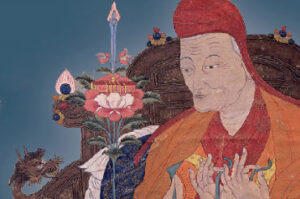
Jamgön Kongtrul Reader's Guide
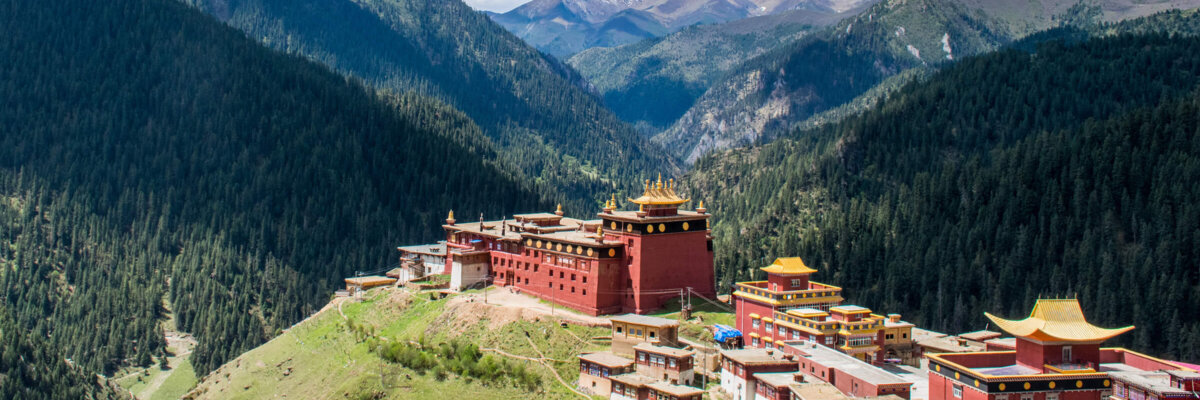
Jamgön Kongtrul Lodrö Thaye
A Guide for Readers

Jamgön Kongtrul Lodrö Taye (1813–1900) was a versatile and prolific scholar and one of the most outstanding writers and teachers of his time in Tibet. He was a pivotal figure in eastern Tibet’s nonsectarian movement and made major contributions to education, politics, and medicine.
Jump to:
Books about Jamgön Kongtrul
The first two books have the most information about Kongtrul himself. These will be joined in 2018 by a definitive biography looking at the life, works, and legacy of this great figure. For a short biography online, please see Alak Zenkar Rinpoche’s biography hosted by Lotsawa House.
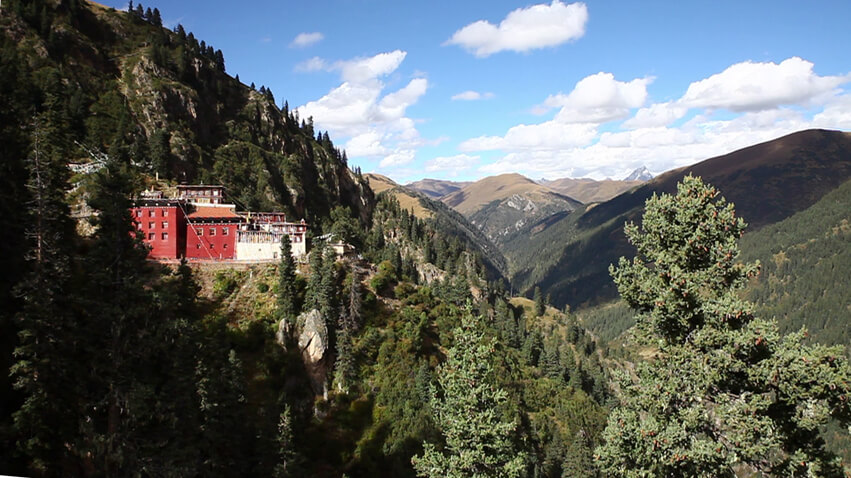
The Life of Jamgon Kongtrul the Great
By Alexander Gardner
This is the most accessible work available on Jamgon Kongtrul’s life, writings, and influence, written as a truly engaging historical biography. Alexander Gardner, who is a specialist of Jamgon Kongtrul, provides an intimate glimpse into the life of one of the most important Tibetan Buddhist teachers to have ever lived.
$39.95 - Hardcover
The Autobiography of Jamgön Kongtrul:
A Gem of Many Colors
Translated by Richard Barron (Chokyi Nyima)
This is one of the most fascinating accounts of a Tibetan Buddhist figure available. It also includes The Marvelous Gem-Like Vision: An Account of the Passing of and Funeral Observances for the All-Seeing Lord by Nesar Karma Tashi Chöphel and The Mirage of Nectar: A Fragmentary Account of the Past Lives of Pema Gargyi Wangchuk Thrinlé Drodul Tsal (his own secret name) by Jamgön Kongtrul Lodro Thaye.
$39.95 - Paperback
Kongtrul's Treasury of Knowledge (Sheja Dzö)
The Treasury of Knowledge is the largest single work by a Tibetan author translated into English. In Tibetan religious literature, its ten books stand out as a unique, encyclopedic masterpiece embodying the entire range of Buddhist teachings as they were preserved in Tibet. In his monumental work, Jamgön Kongtrul presents a complete account of the major lines of thought and practice that comprise Tibetan Buddhism.
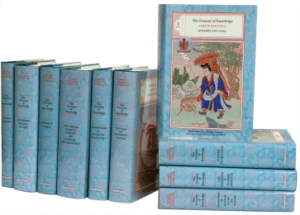
Brief history of The Treasury of Knowledge
From Ringu Tulku’s Ri-me Philosophy
Then, in the Dog and the Pig years [1862–63], when he was fifty years old, Kongtrul wrote the Treasury of Knowledge, both the root text and the commentary. He wrote the root text in the second month of the Water Dog year [1862], when he did a seven-day retreat on the hearing lineage teachings. Earlier, Lama Ngedön had said that Kongtrul should write a treatise on the three vows, and when that was done Lama Ngedön would write a commentary on it. However, Kongtrul thought that several texts on the three vows were already available, and that if he had to write something, it should be more comprehensive in scope and helpful for people who had not studied very much.
With that in mind, during the breaks between sessions of a one-week retreat, he wrote the root text of the Treasury of Knowledge, a treatise on the three higher trainings of discipline, meditation, and wisdom. Later on, he showed this to Jamyang Khyentse, who told him, “When you wrote this you must have been inspired by the blessings of the lamas, and your channels opened by the power of the dakinis. You should place the Treasury of Knowledge at the head of the Five Great Treasuries, and you need to write a commentary on it.”
To encourage him, Khyentse gave him many gifts along with these words. So, in only three months, from the fourth month until the seventh month of the Iron Pig year [1863], Kongtrul wrote the commentary to the Treasury of Knowledge, with Khenchen Tashi Özer acting as the scribe. The part that was left undone was finished during the warm weather of the following year.
Books in the Series
Myriad Worlds:
Book One
Translated by Kalu Rinpoche Translation Group
This first book of the Treasury, which serves as a prelude to Kongtrul’s survey, describes four major cosmological systems found in the Tibetan tradition—those associated with the Hinayana, Mahayana, Kalachakra, and Dzogchen teachings. Each of these cosmologies shows how the world arises from mind, whether through the accumulated results of past actions or from the constant striving of awareness to know itself.
Buddhism’s Journey to Tibet:
Book Two, Three, and Four
Translated by Ngawang Zangpo
Beginning with the appearance of the Buddha in our world (Book Two), it describes the Buddha’s life, his enlightenment, and what he taught (Book Three) from a multitude of Buddhist viewpoints. Buddhism’s transmission to and preservation in Tibet is the focus of the main part of this volume (Book Four), which describes the scriptural transmissions and lineages of meditation practice as well as the Buddhist arts that together make up the world of Tibetan Buddhism.
Buddhist Ethics:
Book Five
Translated by Kalu Rinpoche Translation Group
This volume is the fifth book of that work and is considered by many scholars to be its heart. Jamgön Kongtrul explains the complete code of personal liberation as it applies to both monastic and lay persons, the precepts for those aspiring to the life of a Bodhisattva, and the exceptional pledges for practitioners on the tantric path of pure perception.
Indo-Tibetan Classical Learning and Buddhist Phenomenology:
Book Six, Parts One and Two
Translated by Gyurme Dorje
The first two parts of Book Six, contained in this volume, respectively concern Indo-Tibetan classical learning and Buddhist phenomenology. The former analyzes the traditional subjects of phonology and Sanskrit grammar, logic, fine art, and medicine, along with astrology, poetics, prosody, synonymics, and dramaturgy. The principal non-Buddhist philosophical systems of ancient India are then summarized and contrasted with the hierarchical meditative concentrations and formless absorptions through which the “summit of cyclic existence” can genuinely be attained. Part Two examines the phenomenological structures of Abhidharma—the shared inheritance of all Buddhist traditions—from three distinct perspectives, corresponding to the three successive turnings of the doctrinal wheel.
Frameworks of Buddhist Philosophy:
Book Six, Part Three
Translated by Elizabeth M. Callahan
This volume, Frameworks of Buddhist Philosophy, is his masterful survey of the broad themes and subtle philosophical points found in more than fifteen hundred years of Buddhist philosophical writings. In a clear and systematic manner, he sets out the traditional framework of Buddhism’s three vehicles and four philosophical systems, and provides an overview of the key points of each system. His syncretic approach, which emphasizes the strengths of each of the systems and incorporates them into a comprehensive picture of philosophical endeavor, is well-suited for scholar-practitioners who seek awakening through the combination of analytical inquiry and meditation.
Systems of Buddhist Tantra:
Book Six, Part Four
Translated by Ingrid Loken McLeod & Elio Guarisco
The tantric path is often referred to as the indestructible way of secret mantra, the essence of which is the indestructible union of wisdom (the understanding of emptiness) and method (immutable great bliss). This volume sets forth the various systems that constitute this path, both those of the ancient tantra tradition and of the new tradition.
Foundations of Buddhist Study and Practice:
Book Seven and Book Eight, Parts One and Two
Translated by Richard Barron (Chokyi Nyima)
Foundations of Buddhist Study and Practice comprises Book Seven and Book Eight, Parts One and Two of the Treasury of Knowledge. Book Seven elucidates the various keys needed to correctly interpret, understand, and contemplate Buddhist teachings, including the secret teachings of the Vajrayana. Parts One and Two of Book Eight explain how the teachings are to be integrated into one’s life through the practice of meditation, which unites a state of one-pointed attention with profound insight into emptiness. Jamgön Kongtrul’s evenhanded, elegant, and authoritative statement of such controversial doctrines as unqualified emptiness (“self-empty”) and qualified emptiness (“other-empty”), provisional and definitive meaning, and conventional and ultimate truth as presented in the various schools of Tibetan Buddhism will appeal to both serious Dharma practitioners and advanced students and scholars.
The Elements of Tantric Practice:
Book Eight, Part Three
Translated by Ingrid Loken McLeod & Elio Guarisco
The Elements of Tantric Practice sets forth the essential components of the path of highest yoga tantra, a system of meditation that unites wisdom and compassion in its two phases of practice. The first phase, that of creation, relies primarily on the use of the imagination to effect personal transformation. The phase of completion allows the practitioner to perfect the process of transformation by training in methods that manipulate the energies and constituents of the mind and body. The result of this path is the direct experience of the fundamental nature of mind and phenomena. The Elements of Tantric Practice concerns the meditative processes of the inner system of secret mantra—that of highest yoga tantra—and is based primarily on tantric sources. The author introduces the subject by describing the path of tantra and its underlying principles. The main body of the book deals with two major elements essential to all highest yoga tantras: the practice of the creation phase and that of the completion phase. For the first phase, Kongtrul describes the visualization sequences in which ordinary perceptions are transformed into the forms of awakening and explains how these practices purify the stages of cyclic existence—life, death, and rebirth. The creation phase prepares the practitioner for the techniques of the completion phase, which entail focusing directly on the channels, winds, and vital essences that form the subtle body. Kongtrul presents the key elements of a variety of tantras, including the Guhyasamaja and Yamari, belonging to the class of father tantras and the Kalachakra Hevajra Chakrasamvara Mahamaya Buddhakapala and Tara mother tantras. All these tantras share a common goal: to make manifest the pristine awareness that is the union of emptiness and bliss.
Esoteric Instructions:
Book Eight, Part Four
Translated by Sarah Harding
This volume, Esoteric Instructions, deals with meditation—specifically tantric meditation. Esoteric Instructions is a collection of intimate records of personal teachings by masters that simplify tantric meditations by providing pertinent examples and very personal and helpful hints to disciples based on the master’s own experience. Although originally oral in nature, they have been codified and passed down through specific lineages from teacher to student.
Journey and Goal:
Books Nine and Ten
Translated by Richard Barron (Chokyi Nyima)
Journey and Goal focuses on the spiritual path—the journey and the resultant state of enlightenment to which it leads—the goal. Extensively varied perspectives are offered not only from within the many schools of Buddhism, but also from the different levels of practice and attainment. This is in fact the most comprehensive treatment of these themes to appear in the English language.
Kongtrul's Treasury of Precious Instructions (Damngak Rinpoche Dzö)
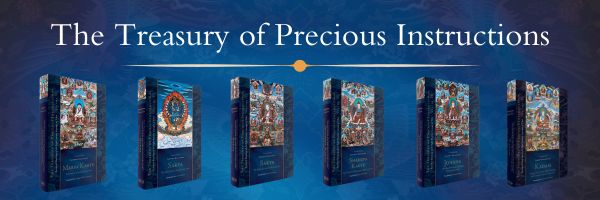
An Overview of the Treasury of Precious Instructions
2016 saw the first release in this eighteen-volume work on the eight lineages of accomplishment, one model for the classifications of practice traditions in Tibet. The Treasury of Precious Instructions was compiled in a roughly chronological order including the following:
- Nyingma - Two Volumes (876 pages)
- Kadampa Tradition - Two Volumes (1,190 pages)
- Sakya Path & Result - Two Volumes (930 pages)
- Marpa Kagyu - Four Volumes (1,567 pages)
- Shangpa Kagyu - Two Volumes (1,304 pages)
- Chöd & Zhije - Two Volumes (900 pages)
- Kalachakra & Orgyen Nyendrup - One Volume (626 pages)
- Mahasiddha Practice and Miscellaneous Teachings - Two volumes (1,088 pages)
- Jonang - One Volume (630 pages)
We are publishing the volumes asynchronously. Releases will spread out over the next few years.
You can also download the descriptive catalog here
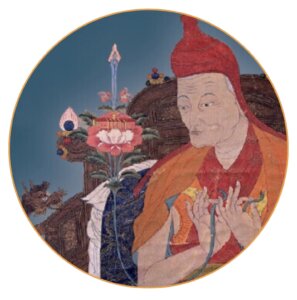
Available Books from the Treasury of Precious Instructions
Kadam:
Stages of the Path, Mind Training, and Esoteric Practice, Part One
Volume 3 of the Treasury of Precious Instructions
Translated by Artemus B. Engle
The third volume of this series covers the teachings and practices of the Kadam lineage. This tradition is based on the teachings of the Indian master Atiśa, who traveled to Tibet in the early eleventh century and stayed for twelve years transmitting teachings that would be embraced by many traditions of Tibetan Buddhism. The three categories of teachings covered here and in the fourth volume of the series—Stages of the Path, Mind Training, and esoteric instructions—correspond to three root texts: Atiśa’s Lamp for the Path to Enlightenment, the aphorisms of the Seven-Point Mind Training, and Atiśa’s Bodhisattva’s Jewel Garland.
Sakya:
The Path with Its Result, Part One
Volume 5 of the Treasury of Precious Instructions
Translated by Malcolm Smith
The fifth volume of this series, Sakya: The Path with Its Result, is the first of two volumes that present a selection of teachings and practices from the Path with Its Result (Lamdre) practice lineage of the Sakya tradition of Tibetan Buddhism. The Sakya lineage derives from Virūpa, Dombhi Heruka, and other Indian masters, or mahāsiddhas, and passes through Gayadhara and his Tibetan disciple Drokmi Lotsāwa Śākya Yeshe (992–1072). The practice tradition centers around the teaching and transmission of the Hevajra Tantra and its subsidiary texts.
Sakya:
The Path with Its Result, Part Two
Volume 6 of the Treasury of Precious Instructions
Translated by Malcolm Smith
The sixth volume of this series, and part two of Sakya: The Path with Its Result, completes Kongtrul’s presentation of a selection of texts from the Sakya tradition of Tibetan Buddhism. This volume includes the complete teachings and practices of the Eight Ancillary Path Cycles. These eight complete the nine path cycles that begin with Virūpa’s Vajra Verses found in volume five of the series. These path cycles are generally only taught to students who have received the entire Path with Its Result (Lamdre) teaching. They contain oral instructions transmitted to Drokmi Lotsāwa by the early eleventh-century Indian masters—Ācārya Vīravajra, Mahāsiddha Amoghavajra, Pandita Prajñāgupta of Oddiyāna, and Pandita Gayadhara. These cycles provide copious material on the creation and completion stages, which was incorporated later into the Three Tantras literature, the signature Vajrayāna teaching of the Sakya school.
Marpa Kagyu, Part 1:
Methods of Liberation
Volume 7 of the Treasury of Precious Instructions
Translated by Elizabeth M. Callahan
The seventh volume of the series, Marpa Kagyu, is the first of four volumes that present a selection of core instructions from the Marpa Kagyu lineage of Tibetan Buddhism. This lineage is named for the eleventh-century Tibetan Marpa Chokyi Lodrö of Lhodrak who traveled to India to study the sutras and tantras with many scholar-siddhas, the foremost being Naropa and Maitripa.
Shangpa Kagyu:
The Tradition of Khyungpo Naljor, Part Two
Volume 11 of the Treasury of Precious Instructions
Translated by Sarah Harding
This is the second of two volumes that present teachings and practices from the Shangpa Kagyu practice lineage of Tibetan Buddhism. This tradition derives from two Indian yoginīs, the dākinīs Niguma and Sukhasiddhi, and their disciple, the eleventh-century Tibetan yogi Khyungpo Naljor Tsultrim Gönpo of the Shang region of Tibet. There are forty texts in this volume, beginning with Jonang Tāranātha’s classic commentary and its supplement expounding the Six Dharmas of Niguma. It includes the definitive collection of the tantric bases of the Shangpa Kagyu—the five principal deities of the new translation (sarma) traditions and the Five-Deity Cakrasamvara practice. The source scriptures, liturgies, supplications, empowerment texts, instructions, and practice manuals were composed by Tangtong Gyalpo, Tāranātha, Jamgön Kongtrul, and others.
Shangpa Kagyu:
The Tradition of Khyungpo Naljor, Part Two
Volume 12 of the Treasury of Precious Instructions
Translated by Sarah Harding
This is the second of two volumes that present teachings and practices from the Shangpa Kagyu practice lineage of Tibetan Buddhism. This tradition derives from two Indian yoginīs, the dākinīs Niguma and Sukhasiddhi, and their disciple, the eleventh-century Tibetan yogi Khyungpo Naljor Tsultrim Gönpo of the Shang region of Tibet. There are forty texts in this volume, beginning with Jonang Tāranātha’s classic commentary and its supplement expounding the Six Dharmas of Niguma. It includes the definitive collection of the tantric bases of the Shangpa Kagyu—the five principal deities of the new translation (sarma) traditions and the Five-Deity Cakrasamvara practice. The source scriptures, liturgies, supplications, empowerment texts, instructions, and practice manuals were composed by Tangtong Gyalpo, Tāranātha, Jamgön Kongtrul, and others.
Zhije:
The Pacification of Suffering
Volume 13 of the Treasury of Precious Instructions
Translated by Sarah Harding
In this volume, Kongtrul presents a diverse corpus of texts from the Zhije (Pacification) tradition that trace especially to the South Indian master Dampa Sangye (d. 1117), whose teachings are also celebrated in the Chöd (Severance) tradition.
Chöd:
The Sacred Teachings on Severance
Volume 14 of the Treasury of Precious Instructions
Translated by Sarah Harding
In this, the fourteenth volume, Kongtrul compiles the teachings on Severance, or Chöd. It includes some of the tradition’s earliest source scriptures, such as the “grand poem” of Āryadeva, and numerous texts by the tradition’s renowned founder, Machik Lapdrön. Kongtrul also brings together the most significant texts on the rites of initiation, empowerments for practice, and wide-ranging instructions and guides for the support of practitioners.
Mahasiddha Practice:
From Maitrayogin and Other Masters
Volume 16 of the Treasury of Precious Instructions
Translated by Padmakara Translation Group
Mahāsiddha Practice, the sixteenth volume, presents a selection of teachings and practices centered on the mahāsiddhas, Indian tantric masters. The mahāsiddha Mitrayogin, whose work forms the majority of this volume, visited Tibet in the late twelfth century. His ritual texts along with instructions are here translated from Tibetan, including sādhanas, empowerments, guru yogas, authorization rituals for protector deities, and detailed compositions on Mahāmudrā practice, or resting in the nature of mind.
Jonang:
The One Hundred and Eight Teaching Manuals
Volume 18 of the Treasury of Precious Instructions
Translated by Gyurme Dorje
In this volume, Kongtrul expands on The One Hundred and Eight Guidebooks, a collection of teaching manuals compiled by the sixteenth-century Tibetan master Kunga Drolchok, adding Indic source texts, Tibetan antecedents, and later interpretations. Though compiled by a Jonangpa abbot and transmitted by the Jonang tradition, these teaching manuals are actually drawn from the Kadam, Sakya, Kagyu, and, to a lesser extent, Nyingma traditions.
Jamgön Kongtrul on Buddhanature
Buddha Nature:
The Mahayana Uttaratantra Shastra with Commentary
By Khenpo Tsultrim Gyamtso
Translated by Rosemarie Fuchs
This is Kongtrul’s The Unassailable Lion’s Roar, a commentary on one of the five Maitreya texts: the Uttaratantra. This text discusses the nature of our mind as the very basis of everything on the Buddhist path and presents Maitreya’s text as a background for the Mahamudra teachings in a way that is especially clear and easy to understand. Also included in this volume is a translation of the text itself, as well as Khenpo Tsultrim Gyatso’s additional commentary.
When the Clouds Part:
The Uttaratantra and Its Meditative Tradition as a Bridge between Sutra and Tantra
Translated by Karl Brunnhölzl
This extensive explanation of the Uttaratantra refers to Kongtrul nearly 100 times and includes a translation of his Guiding Instructions on the View of Great Shentong Madhyamaka - Light Rays of the Stainless Vajra Moon. Kontrul refers to this text as "the highest of all dharmas taught by the Buddha, being the unsurpassable one or the peak of the mahāyāna scriptures".
More by Jamgön Kongtrul
The Ri-me Philosophy of Jamgön Kongtrul the Great:
A Study of the Buddhist Lineages of Tibet
By Ringu Tulku
Translated by Ann Helm
This is the compelling study of the Ri-me “movement”—really a revitalization of many of the traditions within Tibet. It includes an introduction to the history and philosophy of those behind the Ri-me phenomenon; a biography of Jamgön Kongtrul the Great; helpful summaries of the eight lineages’ practice-and-study systems, which point out the different emphases of the schools; an explanation of the most hotly disputed concepts; and an overview of the old and new tantras.
Chöd Practice Manual and Commentary
Translated by V.V. Lama Lodo Rinpoche
This is a rich resource for Chöd practitioners. It contains the Chöd sadhana written by the Fourteenth Karmapa in three versions: Tibetan, a phonetic rendering of the Tibetan, and English translation. Jamgön Kongtrul’s commentary on the sadhana, which forms the bulk of this book, supplies the necessary amplification and clarification; it is given both in English and Tibetan. An important feature of the commentary is the inclusion of illustrations for the different stages of visualization discussed within the commentary. All in all, this is an essential practice tool and reference guide for the serious Chöd practitioner.
Sacred Ground:
Jamgön Kongtrul on “Pilgrimage and Sacred Geography”
By Ngawang Zangpo
This work describes two journeys: a journey outward to specific pilgrimage places in eastern Tibet, and a journey inward to the sacred world of tantra, accessible through contemplation and meditation. It sheds light on Himalayan Buddhists’ concepts of sacred land, places of pilgrimage in tantric Buddhism, and how pilgrimage is undertaken. It enhances our appreciation of the world and its sacred aspect everywhere—first and foremost, where we sit now. On the basis of this judicious choice of rare Tibetan texts, translated here for the first time, correlating inner and outer pilgrimage, this book is of considerable value to the Buddhist practitioner.
Machik’s Complete Explanation:
Clarifying the Meaning of Chöd (Expanded Edition)
By Sarah Harding
While this is not by Kongtrul, his influence comes clearly across throughout the translator’s introduction. This expanded edition also includes Machik Lapdrön’s earliest known teaching, the original source text for the tradition, The Great Bundle of Precepts on Severance (Chöd), which is found in Kongtrul’s Treasury of Precious Instructions. This pithy set of instructions reveals that the teachings of the perfection of wisdom are the true inspiration for Chöd. Machik developed a system, the Mahamudra Chöd, that takes the Buddha’s teachings as a basis and applies them to the immediate experiences of negative mind states and malignant forces. Her unique feminine approach is to invoke and nurture the very “demons” that we fear and hate, transforming those reactive emotions into love. It is the tantric version of developing compassion and fearlessness, a radical method of cutting through ego-fixation.
Enthronement:
The Recognition of the Reincarnate Masters of Tibet and the Himalayas
Translated by Ngawang Zangpo
Even the most casual contact with the culture, politics, or religion of Tibet and the surrounding region brings outsiders face-to-face with the institution of reincarnate spiritual masters. Past masters are identified as small children installed in their predecessor’s monastery in a ceremony called “enthronement” and educated to continue the work of their former incarnation. This custom has provided a principal source of spiritual renewal for Himalayan Buddhists for the past thousand years. The introduction places the subject of reincarnate meditation masters within two major contexts: the activity of bodhisattvas, and in modern Tibetan society, where the reappearance of past masters is both natural and profoundly moving. Tai Situpa Rinpoche, a contemporary reincarnate master and a leader of the Kagyu lineage, describes the process of finding other reincarnate masters.
The Classic Guide to Lojong, a Tibetan Buddhist Practice for Cultivating the Heart of Compassion
Translated by Ken McLeod
Here is a practical Buddhist guidebook that offers techniques for developing a truly compassionate heart in the midst of everyday life. For centuries, Tibetans have used fifty-nine pithy slogans originally presented in the Kadampa master Chekawa’s Seven Points of Mind Training—such as “A joyous state of mind is a constant support” and “Don’t talk about others' shortcomings”—as a means to awaken kindness, gentleness, and compassion.
This edition of The Great Path of Awakening contains an accessible, newly revised translation of the slogans from Chekawa’s text. It also includes illuminating commentary from Jamgön Kongtrul that provides further instruction on how to meet every situation with intelligence and an open heart.
Jamgön Kongtrul’s Retreat Manual
Translated by Ngawang Zangpo
The Kagyu and Nyingma traditions of Himalayan tantric Buddhism require a long period of intensive training in meditation—a three-year, three-month retreat—before a practitioner is considered to be a qualified teacher.Jamgön Kongtrul’s Retreat Manual was written in the mid-nineteenth century and is intended for those who wish to embark on this rigorous training. It guides them in preparing for retreat, provides full details of the program of meditation, and offers advice for their re-entry into the world.
The Teacher-Student Relationship
Translated by Ron Garry
It is crucial for students of Vajrayana Buddhism to find an authentic wisdom teacher and know how to properly rely upon that teacher in order to awaken to their Buddha Nature and thereby attain full enlightenment. Fortunately, the topic has been thoroughly explored by Jamgön Kongtrul in the tenth chapter of The Treasury of Knowledge, singled out here. This essential text clearly lays out what credentials and qualities one should look for in a wisdom teacher, why a wisdom teacher is necessary, and how the relationship between this teacher and disciple best develops once it is established.
The Torch of Certainty
Translated by Judith Hanson
is Kongtrul’s famous ngöndro text, exploring the nature of impermanence, the effects of karma, the development of an enlightened attitude, and devotion to the guru. Kalu Rinpoche, Deshung Rinpoche, and Chögyam Trungpa Rinpoche also add commentaries and explain the significance of The Torch of Certaintyfor modern-day students and practitioners of Tibetan Buddhism.
The Profound Inner Principles:
With Jamgön Kongtrul Lodro Taye’s Commentary Illuminating “The Profound Principles”
By The Third Karmapa
Translated by Elizabeth M. Callahan
With masterful clarity and precision, The Profound Inner Principles delineates the principles and foundations of Vajrayāna practice. Rangjung Dorje presents the nature of things—mental and physical—and looks at the cause of delusion, what delusion creates, and how delusion is corrected. His explanations capture the principles of the Vajrayāna’s niruttara tantras, with a special focus on the structure and functioning of the body.
This translation includes a commentary by Jamgön Kongtrul with extensive footnotes containing extracts from all the other important commentaries to The Profound Inner Principles, several glossaries with annotations by the translator, a works cited list, a selected bibliography, and an index.
Timeless Rapture:
Inspired Verse of the Shangpa Masters
Translated by Ngawang Zangpo
This book is a compilation of the songs of the Shangpa Kagyu masters and offers a rare glimpse into the mysticism of this tradition based mainly on the profound teaching of two women, Niguma and Sukhasiddhi. Kongtrul compiled this compendium of spontaneous verse sung by tantric Buddhist masters from the tenth century to the present and includes translations as well as short descriptions of each poet’s life and a historical overview of the lineage. Kongtrul chooses songs that are also teachings. They address thepractical and relevant questions for all Buddhists: how to live a meaningful life, how to confront death, and how to enter and remain within the sacred sanctuary of the mind’s nature: enlightenment.
Guru Rinpoche:
His Life and Times
By Ngawang Zangpo
Kongtrul was known to say that “there was no area of Tibetan soil larger than a horse’s hoof untouched by Guru Rinpoche’s feet.” This collection has four very different Tibetan accounts of his story: one by Jamgön Kongtrul; one according to the pre-Buddhist Tibetan religion Bön, by Jamyang Kyentse Wongpo; one based on Indian and early-Tibetan historical documents, by Taranata; and one by Dorje Tso. In addition, there are supplications by Guru Rinpoche and visualizations to accompany them by Jamgön Kongtrul.
$29.95 - Paperback
Buddhist Fasting Practice:
The Nyungne Method of Thousand-armed Chenrezig
By Wangchen Rinpoche
While not by Kongtrul, Wangchen Rinpoche relies heavily on Kongtrul’s writings, referencing him throughout the book. Nyungne is a profound, two-and-a-half-day practice of purification and healing developed by a nun (from varying accounts Kashmiri or from the Swat area of present-day Pakistan) who developed this practice and healed her leprosy. It involves the keeping of strict vows; the second day is devoted to complete silence and fasting. The meditation centers on the recitations, mantras, and guided visualizations of the Thousand-Armed Chenrezig, the embodiment of all the buddhas’ loving-kindness and compassion. Translated as “abiding in the fast,” Nyungne is said to be effective in the healing of illness, the nurturing of compassion, and the purification of negative karma.
Tibetan Treasure Literature:
Revelation, Tradition, and Accomplishment in Visionary Buddhism
By Andreas Doctor
By Jamgon Mipham
The Treasure tradition of the Nyingma School of Tibetan Buddhism posits that in the eighth century, various adepts hid spiritual instructions (gter ma, lit. “Treasures”) for the purpose of future discovery at auspicious times. Tibetan Treasure Literature discusses central themes and personalities in the history and practice of this tradition.
*This exploration of the terma tradition has Kongtrul featured, no surprise considering the vastness of his work with terma texts.
Additional Books by Other Publishers
Other titles by Kongtrul include the volumes of Light of Wisdom (Rangjung Yeshe) and Creation and Completion (Wisdom) and, for an excellent source on terma, his own Hundred Tertons (KTD).
In addition, Lotsawa House hosts many other translations of Kongtrul in their Jamgön Kongtrul Lodrö Thaye Series.
SNOW LION NEWSLETTER ARCHIVE
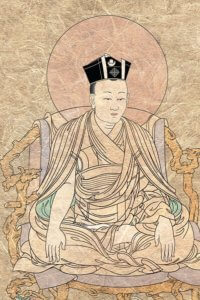
The Third Karmapa: True Nature of Mind
The Eight Kinds of Consciousness
by Rangjung Dorje
The Third Karmapa
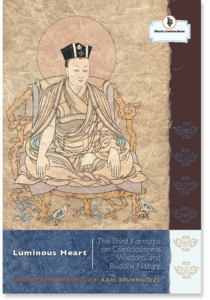
The understanding of mind and the eight kinds of consciousness is obtained through the highest understanding (Skt. “prajñā”) of listening and reflecting. When we really meditate on this basis and glimpse the true nature of mind, we will be able to steadily increase our experience of it through all subsequent meditation. That’s why it is extremely useful to know about the eight kinds of consciousness.
—from Luminous Heart: The Third Karmapa on Consciousness, Wisdom, and Buddha Nature, translated and introduced by Karl Brunnhölzl
For more information:
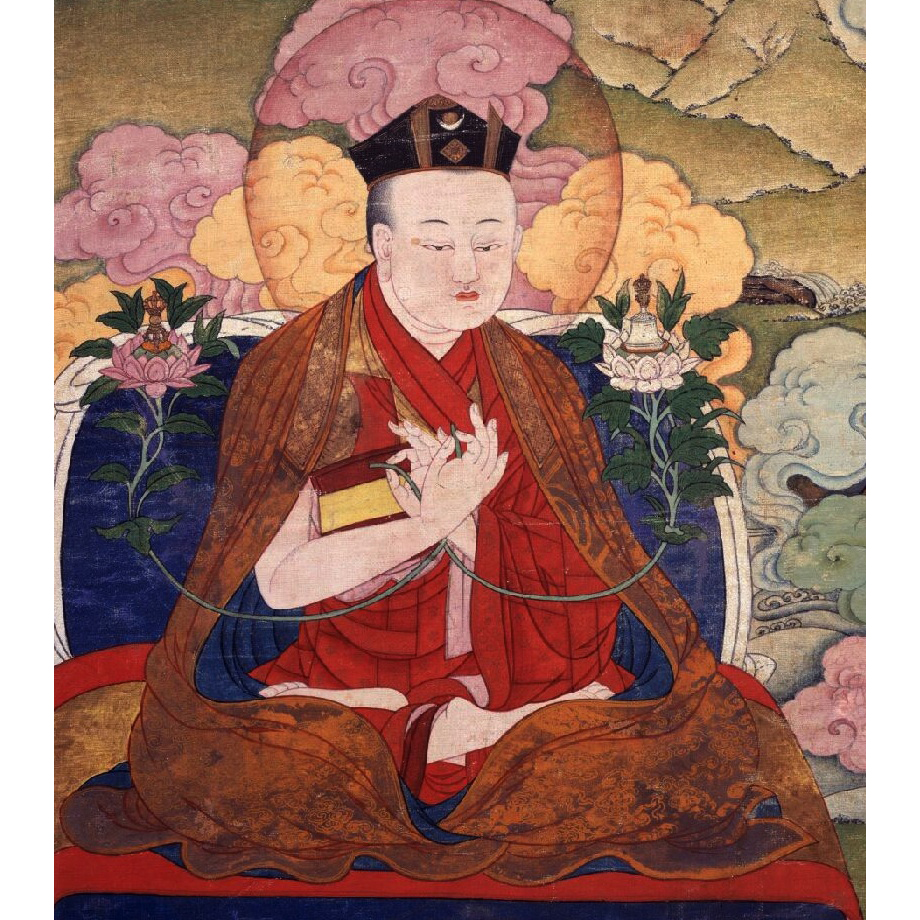
The Third Karmapa Rangjung Dorje (1284–1339) was a scholar of fabled erudition. He mastered texts and teachings across sectarian boundaries, wrote treatises on medicine and astrology, built monasteries, and was spiritual advisor to the last Yuan emperor.
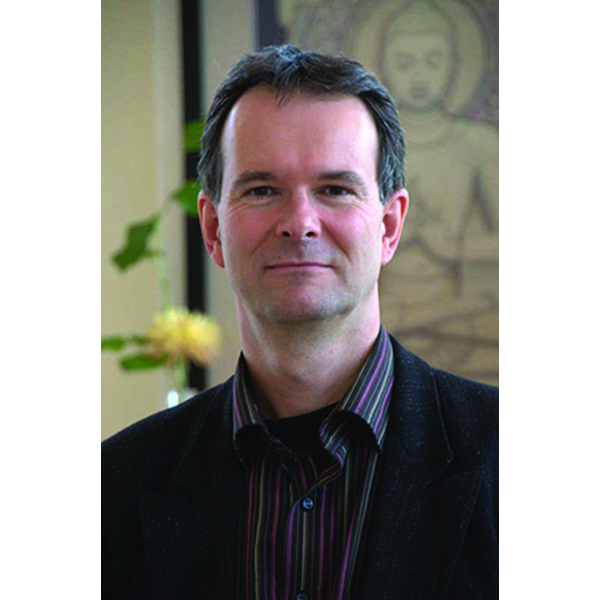
Karl Brunnhölzl, MD, was trained as a physician and also studied Tibetology. He received his systematic training in Tibetan language and Buddhist philosophy and practice at the Marpa Institute for Translators, founded by Khenpo Tsultrim Gyamtso Rinpoche. Since 1989 he has been a translator and interpreter from Tibetan and English. He is presently involved with the Nitartha Institute as a teacher and translator.
Related Articles:
Introduction to Buddhist Psychology
The Eighth Situpa on the Third Karmapa's Mahamudra Prayer
...
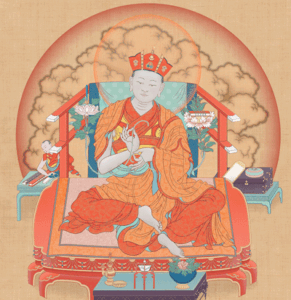
Mahamudra: All Stages of Instruction
From the Forward
All students of the Kagyu traditions of Tibetan Buddhism are familiar with Karmapa III Rangjung Dorje’s beautiful prayer, known in brief simply as the Aspiration of Mahamudra, and recited daily in countless Tibetan temples, retreats and homes. The depth of the significance this short litany holds for those practicing within the tradition first became clear to me some twenty years ago, when I had the good fortune to read, under the guidance of the late Kalu Rinpoche, the great commentary that Situ Panchen composed to explain Rangjung Dorje’s words.
Hearing the actual phrases once spoken by Rangjung Dorje and Situ Panchen expounded by perhaps the greatest contemporary representative of the Mahamudra approach to meditation came with the force of a revelation, pointing the way to a transition from treating Mahamudra as an object of study, to the possibility of comprehending it as the very texture of experience, defying all prospects of objectification.
In the present volume Lama Sherab Dorje offers us an accurate and highly readable translation of this masterwork of Kagyu Buddhism, a work that is sure to be read with profit both by those who wish to learn something about the system of Mahamudra, and by those practicing within the tradition. The latter, in particular, will find here a text that deserves to be studied in depth, until, in the words of the tradition, the intentions of the author have become fully integrated with one’s own meditations.
Matthew Kapstein
Department of Religion
Columbia University
July 1994
For more information:
Lama Sherab Dorje, also known as Tulku Sherdor, is the executive director of Blazing Wisdom Institute and the founder of the Rimay Monlam Peace Prayer Gathering in the United States. He met his first principal teacher, Tulku Urgyen Rinpoche, in Nepal in 1981 and was fortunate to study personally with, and interpret for, many other preeminent Tibetan masters of the twentieth century.
Article on Mahamudra:
Books Related to Mahamudra
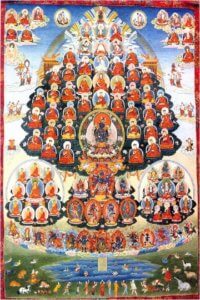
| The following article is from the Winter, 2012 issue of the Snow Lion Newsletter and is for historical reference only. You can see this in context of the original newsletter here. |
Adapted from The History of the Karmapas
by Lama Kunsang; Lama Pemo, and Marie Aubele.
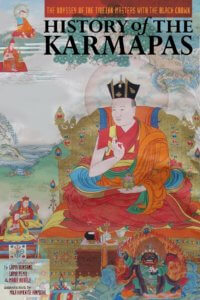
Most of us know that tulkus are recognized as reincarnations of specific masters, but we may not know the beginnings of the tulku system.
Here's the story, along with a bit of the fascinating history of the first recognized tulku and his magical dealings with the famed Kubilai Khan.
...when the disciples responsible for finding the tulku would come to inquire about the lama, he would already have written down the details birth.
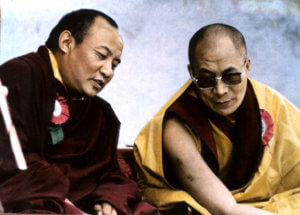
H.H. 16th Gyalwa Karmapa and H.H. 14th Dalai Lama
Tulkus: The First Karmapa
The first Karmapa, Düsum Khyenpa (1110-1193) made numerous predictions concerning his successors.
Before his death, he wrote a letter wherein he gave instructions for the discovery of his future incarnation, or tulku. Writing such a letter, which was sometimes transmitted orally to a trusted disciple, then became one of the methods for recognizing the Karmapas. Later it would frequently happen that even masters of other lineages called on the Karmapa to discover tulkus.
For example, the 15th Karmapa, Kyakyab Dorje, who lived at the end of the nineteenth century and the beginning of the twentieth century, recognized around one thousand tulkus during his life.
Tulku Urgyen Rinpoche, a contemporary master, recounts the following:
Although he had unimpeded clairvoyance, the fifteenth Karmapa explained that he did not always have complete control over it. On the one hand, sometimes he would know when a lama was going to die and where he would be reborn without anyone having first requesting this information. Then, when the disciples responsible for finding the tulku would come to inquire about the lama, he would already have written down the details of the tulku's death and rebirth.
In other cases, he could only see the circumstances of rebirth when a special request was made and certain auspicious circumstances were created through any of a number of practices. And in a few cases, he couldn't see anything, even when people requested his help. He would try, but the crucial facts would be 'shrouded in mist.' This, he said, was a sign of some problem between the dead lama and his disciples. For instance, if there had been fighting and disharmony among the lama's following, the whereabouts of his next incarnation would be vague and shrouded in haze.
'The worst obstacle for clearly recognizing tulkus,' he explained, 'is disharmony between the guru and his disciples. In such cases, nothing can be done, and the circumstances of the next rebirth will remain unforeseeable.'
Three months before the passing of the first Karmapa, a number of unusual rainbows occurred, and mild earthquakes hit the area around Tsurphu, causing the population to say that the dakinis were showing themselves by playing the drum. The first day of the year of the Water Ox (1193), Düsum Khyenpa transmitted the Last Testament to his principal disciple, Drogon Rechen, who would become the main holder of the teachings of the Karma Kagyu lineage. He also entrusted his texts and reliquaries to him. Two days later, at dawn, Düsum Khyenpa gave a final teaching to his closest disciples. He then sat in a meditation posture, focused on the sky, and entered meditative absorption. At noon, after his breathing had stopped, he manifested the state of tukdam, the ultimate meditation at the moment of death.
The state of tukdam reveals the level of realization of the master. Although the vital functions no longer play their role, the body retains its suppleness, and the region of the heart stays warm; the head does not drop, and no typical odor of decomposition develops. On the contrary, it may happen that the followers smell a subtle perfume emanating from the body. Although the mind of the master has entered into the ultimate sphere of all phenomena, the dharmadhatu, it keeps a link with the body. This state of tukdam can last from many hours to many days.
After the cremation rite for the first Karmapa, his followers discovered his heart and tongue (representing awakened mind and speech) intact in the middle of the ritual pyre, as well as fragments of bone on which appeared Buddhist symbols, particularly sacred syllables. The relics were collected and placed in a stupa in Tsurphu Monastery.
Dealing with Kubilai Khan: The Second Karmapa
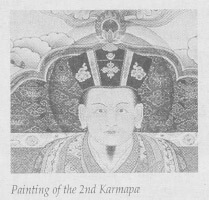
The Second Karmapa, Karma Pakshi (1206-1282) was born in Kyil-le Tsakto, in eastern Tibet, in the Wood Rat year (1204), into a family descended from the famous Tibetan king, Trisong Detsen. His parents were yogins, and Karma Pakshi was their last-born child. Just before his conception, his mother dreamt of a sun composed of light emanating from her heart, with rays illuminating the entire world.
His parents, convinced that their son possessed rare spiritual qualities, entrusted him to Pomdrakpa, to whom the previous Karmapa had given the Last Testament shortly before his death.
Pomdrakpa very quickly realized that his young student was, in his own words, "blessed by the dakinis." This conviction had already been strengthened by a vision in which Düsum Khyenpa, the first Karmapa, as well as other Kagyu lineage lamas, surrounded the child's house.
When the child was eleven years old, Pomdrakpa officially recognized him as a tulku of the first Karmapa, ordained him as a novice, and gave him the title of Chokyi Lama, "Master of the Dharma." This period was a key moment in the history of the lineage, as it marked the beginning of the tulku recognition system. It was later applied, with some variation, by all the masters of other schools.
The Mongols had become the masters of the Sino-Tibetan borders when, in 1251, the grandson of the great Genghis Khan, Kublai (also spelled Kubla or Khubilai), then governor of the provinces of the west and greatly interested in the philosophy and wisdom of Buddhism, invited the Karmapa, now in his forties, to his residence. The lineage head's reputation had reached even his ears.
giving the Tibetan lineage head his freedom and assuring him that he could spread the Dharma everywhere without fear.
Karma Pakshi was aware of the great importance of the meeting for the future relationship between the two peoples. In 1254, despite the risks involved, the Karmapa accepted the invitation and was received a few months later by an important Mongol delegation that had advanced to meet him. It was customary to go out to meet important personalities as a sign of respect; the more prestigious the person, the further away they would be met. Thus, in 1255, the Karmapa was ceremoniously led to the Kubilai's residence.
Once at the court, Kubilai' gave the Karmapa his complete attention and showered him with gifts. The Karmapa's reputation as an accomplished master with extraordinary powers greatly impressed the Khan and his court, and he ardently hoped that his guest would display his qualities before the Mongol religious heads. The Karmapa agreed to satisfy Kubilai's request, and his prestige was further elevated. Enamored, the future emperor wished to keep this great master permanently near him, but Karma Pakshi, refusing to become involved in the intrigue plotted at the court, declined the offer, which gravely offended the Mongol chief.
They desperately tried many times to inflict the worst tortures on him: burning him at the stake, poisoning him, throwing him off a cliff.... Nothing worked.
His meditations on Mahakala and Avalokiteshvara strengthened Karma Pakshi's resolve to leave the Khan and move to the Minyak kingdom in the northeast of Tibet. The Karmapa's return journey was troubled by these events, and he sensed the imminent danger.
Kubilai Khan had not forgotten the "affront" he thought himself to have suffered some years earlier. Influenced by instigators in his court, he was convinced that Karma Pakshi had plotted against him. He therefore decided to have the Karmapa assassinated and sent troops in pursuit. The soldiers succeeded in arresting the Karmapa and quickly set themselves to carrying out Kubilai's orders. They desperately tried many times to inflict the worst tortures on him: burning him at the stake, poisoning him, throwing him off a cliff.... Nothing worked.
Finally, Kubilai understood that he was dealing with an exceptional master and begged forgiveness.
Once Kubilai was informed of these events, he decided to send Karma Pakshi into exile in the desert, hoping that he would eventually die of privation in this savage environment. However, not only did the Karmapa withstand the new ordeal, he even succeeded in drafting a number of religious texts. Finally, Kubilai understood that he was dealing with an exceptional master and begged forgiveness. Moreover, he offered him gold and asked him to stay at his court. Karma Pakshi refused the gold, but agreed to stay with Kubilai for some time and bestowed new teachings upon him to renew their bond.
In Marco Polo writings, he recounts Tibetan lamas capable of accomplishing miracles
When Karma Pakshi desired to return to Tibet, this time Kubilai acquiesced, giving the Tibetan lineage head his freedom and assuring him that he could spread the Dharma everywhere without fear. It was during this period that Marco Polo lived at the Mongol court of China. In his writings, he makes reference to Tibetan lamas capable of accomplishing miracles and recounts festivities in the great reception hall, where the Great Khan presided at a table floating many meters above the ground with goblets that mysteriously set themselves before the host and his companions.
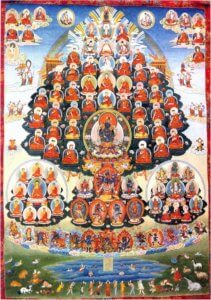
Related Articles:
For more information:
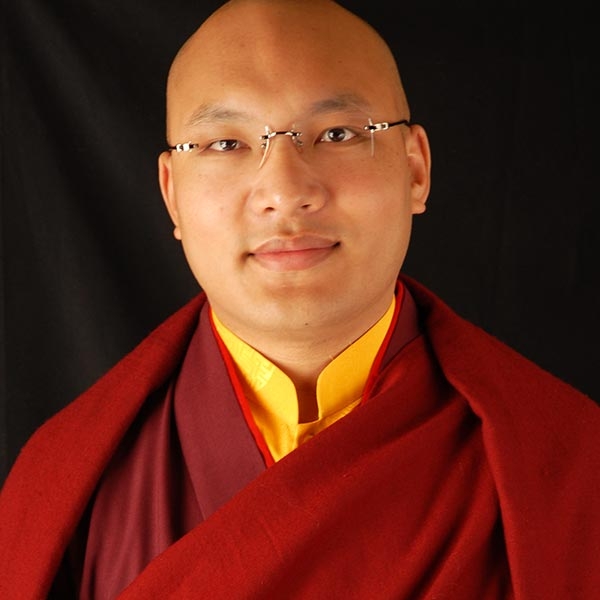
The 17th Gyalwang Karmapa, Ogyen Trinley Dorje, is the spiritual head of one of the major schools of Tibetan Buddhism. The 900-year-old lineage of Karmapas has included some of Tibet’s greatest spiritual masters. Born to nomadic parents in rural Tibet, he was identified while still a young child as the heir to this leadership position. In 2000, the Karmapa’s dramatic escape to India from Chinese-ruled Tibet at the age of fourteen propelled him onto the world stage.
Related Books
$26.95 - Paperback
By: Jonathan C. Bell & Marie Aubele & Lama Kunsang & Maureen Lander & Lama Pemo
The Third Karmapa's Mahamudra Prayer
$17.95 - Paperback
By: Rosemarie Fuchs & The Third Karmapa & XII Khentin Tai Situpa Rinpoche
The Eighth Situpa on the Third Karmapa's Mahamudra Prayer
$19.95 - Paperback

| The following article is from the Spring, 2012 issue of the Snow Lion Newsletter and is for historical reference only. You can see this in context of the original newsletter here. |
AN INTERVIEW WITH
LAMA KUNSANG & LAMA PEMO
authors of History of the Karmapas
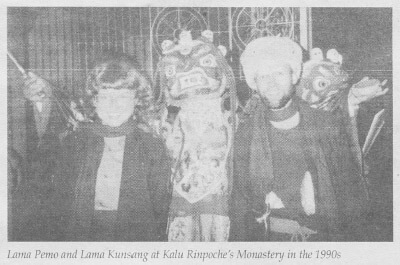
How did you come to write History of the Karmapas?
Lama Pemo: Starting in adolescence Lama Kunsang was very interested in biographies of Buddhist saints. Because he repeatedly recounted the biographies to all of his friends and family members, he ended up knowing all the stories in detail. Already at that time people would tell him: You know so much about the Karmapas. Why don't you write a new book on them?
Lama Kunsang: Then during the thirty years that followed we both continued collecting material about the Karmapas and masters linked to their activity.
It was in 2008 that we actually decided to sit down in order to compile this rich material, with the goal of providing a complete reference work concerning the Karmapas. Encouraged by Marie Aubele—a French editor and writer who offered her help— we started writing History of the Karmapas.
We also turned to Mila Khyentse Rinpoche to help us in this challenging task. He considerably contributed to the book due to his immense knowledge in numerous fields. We requested that he draw some calligraphies of the Karmapas and write an introduction to explain some Buddhist notions difficult for the average reader to understand.
LP: We decided to enrich the book with lively accounts and numerous anecdotes of the private lives of masters, drawn from various written and oral sources. As Lama Kunsang is a specialist and lecturer in Asian history and travels to Tibet and Bhutan several times a year, he took advantage of this situation in order to find more details, take photos and interview people.
Thus many sections of the book came about rather naturally. For example, he interviewed the aged Karma Shedrup Rinpoche—who now lives in Rewalsar, Northern India—about his life as a young tulku in Tsurphu Monastery. This master remembered many private stories about the Karmapas, as he had been in care of the 16th Karmapa and the famous "Great Khandro", the 15th Karmapa's spiritual consort.
What is your link with the Karmapas?
LK: We both met the Dharma in the late 1970's when we had barely emerged from adolescence. It was during this period that the 16th Karmapa sent Kalu Rinpoche as his representative to the West. A few years later, at the age of twenty-four, we did the traditional three-year-retreat under Kalu Rinpoche's direction, followed by another year of retreat to deepen our understanding. Throughout the retreats the karmapa greatly inspired us and was constantly present in our minds. After retreat, we went to India and spent five years in Kalu Rinpoche's monastery in the Himalayan foothill region of Darjeeling. There we were asked to join his translation committee whose task it was to translate into English Jamgon Kongtrul's Treasury of Knowledge, an encyclopedia of Buddhism.
During this time we occasionally went to the Karmapa's seat in Rumtek, Sikkim; on our first visit we met a helpful monk who allowed us to catch a glimpse of the unique religious items and termas that belonged to the previous Karmapas; we also spent hours meditating in the shrine room that contains the 16th Karmapa's golden stupa with his relics. The living presence and the blessing of the Karmapa were still palpable there.
They were joking noisily with us all the time and even tried to offer us their modest provisions, but as soon as we came in sight of Tsurphu Monastery, they all of a sudden became extremely serious, joined their hands, tears in their eyes, and started to chant Karmapa Chenno, "Karmapa think of me."
Which Karmapa has left the deepest impression on you?
LP: All Karmapas had exceptional qualities. However, one who particularly touched us because of his limitless compassion was the 8th Karmapa, who passed away at age forty after having taking upon himself an epidemic of leprosy.
The 15th Karmapa was also very special in his lineage as he was a terton (treasure revealer) and the only Karmapa to take spiritual consorts.
The 16th Karmapa, who passed away in an American hospital, was also particularly inspiring for us: his joyful approach to death transformed the atmosphere of the entire hospital; his exemplary way of using his cancer was the ultimate teaching to students and the medical team alike. We dedicated a long chapter to this Karmapa as numerous readers met him in the seventies and also because he was the first Karmapa to set foot on Western soil and establish dharma centers.
The 17th Karmapa occupies, of course, a very special position in the history of the Karmapas as he is the present head of the Kagyu lineage. He became world-famous due to his spectacular and greatly publicized flight from Tibet in the winter of 1999/2000. In the book we also recount the amazing details of this adventure.
Can you say something about your first encounter with the young 17th Karmapa?
LP: In 1993, while staying in Kalu Rinpoche's monastery, in India not far from the Tibetan border, we heard about the opening of Tibet and went to Kathmandu, where we managed to get a permit for two months. So we traveled to Lhasa at the end of the winter and headed straight to Tsurphu, the Karmapa's monastery (4 hours drive from Lhasa.) We succeeded in sneaking into a local bus, filled to the brim with pilgrims coming from Kham (eastern part of Tibet, the 17th Karmapa's birth region.) It was a delightful and unforgettable journey!
We were the only Westerners in the midst of a joyful, lively crowd of Khampas, all dressed in their best attire and adorned with colorful jewelry. They were joking noisily with us all the time and even tried to offer us their modest provisions, but as soon as we came in sight of Tsurphu Monastery, they all of a sudden became extremely serious, joined their hands, tears in their eyes, and started to chant Karmapa Chenno, Karmapa think of me.
The monastery, perched at 4,300 meters, was an awesome sight! We headed straight to the special chamber where the Karmapa gave his blessings every day at noon. When we first saw the child, then eight years old, we were mesmerized by his impressive, large eyes gazing at us fixingly. We both felt an immediate and strong connection and were moved to tears. There was such an indescribable presence about him! He seemed slightly amused, perfectly at ease, and full of self-confidence when he blessed the pilgrims one after the other with a long stick.
After this first encounter we stayed at the monastery for two weeks, lodged in a small cell in freezing cold winter weather. At that time there was no food available for foreign visitors and no shop around the monastery; so we sustained ourselves with a bag of tsampa (roasted barley) that we had thought to bring with us and some rancid yak butter (Tibetans' special treat!) to add some flavor to our dry barley flour. But we would have endured any hardship to be able to meet the Karmapa every day. Every morning we returned to see him at noon in order to get his blessing.
One day we noticed a group of Khampa pilgrims who followed the Karmapa when he left the room after a blessing. As we suddenly saw them line up to kneel down with their foreheads touching the stone floor, we wondered what was going on there. The Karmapa gave them a very special traditional blessing by putting his boot on their heads. We imitated the Tibetans and also knelt down.
On seeing us two westerners in this position, he stopped in front of us and burst out laughing! He seemed to hesitate a little bit, but then he jokingly put his boot on our heads with a much softer gesture, as if he knew that Westerners were not at all familiar with such a blessing!
One month later we returned to Tsurphu monastery with Bokar Rinpoche. We still clearly remember the joyful meeting between the Karmapa and Bokar Rinpoche, who had brought a big bag filled with toys that greatly amused the young Karmapa. He was particularly interested in a big plastic frog that he grasped jokingly, getting it to rebound on the table in front of him.
During our stay there we also went to the lingkor, to the hills above the monastery where the different Karmapas had meditated in caves. The blessing is still very strong there.
The Karmapa gave them the very special traditional blessing by putting his boot on their heads. We imitated the
Tibetans and also knelt down. On seeing us two westerners in this: position, he stopped in front of us and burst out laughing!
Does this book help the reader to better understand the principle of reincarnation and the tulku system?
LK: Mila Khyentse Rinpoche's brilliant introduction is a real plus, as it adds many clarifications on subjects that were not explained in great detail in the book itself. He elucidates in a completely new way the process of reincarnation, the tulku system, and other points, such as the invisible world of the Karmapas, their specific visions and powers, the different levels of consciousness, the three kayas, the functioning of emanations, etc. Many readers of the French version told us that the book greatly helped them to understand reincarnation more clearly.
Why do great Tulkus such as the Karmapas still need such a strict education?
LP: For most people it is difficult to understand that great Bodhisattvas such as the Karmapas still need such a long education and must train in meditation like ordinary practitioners.
As Mila Khyentse Rinpoche says in his introduction, tenth ground Bodhisattvas do not suffer any alteration of consciousness on entering the womb and can thus effortlessly remember most of their previous studies. They do not come back propelled by karmic forces; they decide to come back motivated by their wish to help beings. They only take up formal teaching, transmitted from the mouth of the master to the ear of the disciple, as Tibetans say, to set an example for practitioners.
For them, a simple review of the path and its practices is sufficient. However, the longer the delay between rebirth and rediscovery, the greater the risk of loss. That is why elaborate systems of recognition rapidly developed in Tibet.
What needs to be purified are not the illnesses and adverse circumstances, which are only the results of an erroneous vision of reality, but rather the very cause ignorance that permitted their emergence in the first place.
Why do many Karmapas die so young?
LK: As Mila Khyentse Rinpoche explains in his introduction, great Bodhisattvas can take upon themselves negative conditions and lighten in this way the karma accumulated by ordinary beings. They take upon themselves physical or mental pains and adverse circumstances and give happiness in return.
It is not rare for a Karmapa to voluntarily contract illnesses such as smallpox and die. These acts of great compassion rapidly consume their vital energy, thus shortening their lives. However, in order to counteract this, they usually perform long life practices in retreat. Nonetheless, due to their tireless activity entirely oriented towards the benefit of beings, the Karmapas often die young.
When Bodhisattvas take upon themselves the troubles of beings, they take over their ignorance and purify it by transforming it into wisdom.
It is, however, not the sickness that they take upon themselves that affects them, but the erroneous vision of the unenlightened beings they help. What needs to be purified are not the illnesses and adverse circumstances, which are only the results of an erroneous vision of reality, but rather the very cause ignorance that permitted their emergence in the first place.
When Bodhisattvas take upon themselves the troubles of beings, they take over their ignorance and purify it by transforming it into wisdom. It is precisely this purification process that consumes the energy of Bodhisattvas and can shorten their lives.
Although the vital functions no longer play their role, the body retains its suppleness and the region of the heart stays warm
What characterizes their passing away?
LP: When great Bodhisattvas die they usually sit in a meditation posture and enter the ultimate meditation, tukdam, that is considered their ultimate teaching and reveals the level of realization of the master. Although the vital functions no longer play their role, the body retains its suppleness and the region of the heart stays warm; the head does not drop and no typical decomposing odor develops.
On the contrary, it may happen that the followers smell a subtle perfume emanating from the body. After the cremation rite of the first Karmapa, for example, his followers discovered his heart and his tongue (representing the awakened mind and speech) intact in the middle of the ritual pyre, as well as fragments of bone on which appeared Buddhist symbols, particularly sacred syllables. Meteorological signs such as rainbows, particular cloud formations, etc. also occur when great Bodhisattvas pass away.
For more information:



H.H. the Seventeenth Karmapa, Ogyen Trinley Dorje
The 17th Gyalwang Karmapa, Ogyen Trinley Dorje, is the spiritual head of one of the major schools of Tibetan Buddhism. The 900-year-old lineage of Karmapas has included some of Tibet’s greatest spiritual masters. Born to nomadic parents in rural Tibet, he was identified while still a young child as the heir to this leadership position. In 2000, the Karmapa’s dramatic escape to India from Chinese-ruled Tibet at the age of fourteen propelled him onto the world stage.
Related Video:
Related Books
$26.95 - Paperback
By: Jonathan C. Bell & Marie Aubele & Lama Kunsang & Maureen Lander & Lama Pemo
The Third Karmapa's Mahamudra Prayer
$17.95 - Paperback
By: Rosemarie Fuchs & The Third Karmapa & XII Khentin Tai Situpa Rinpoche
The Eighth Situpa on the Third Karmapa's Mahamudra Prayer
$19.95 - Paperback
$39.95 - Paperback
By: Chandrakirti & Eighth Karmapa Mikyo Dorje & Jules B. Levinson & The Eighth Karmapa Mikyo Dorje & Birgit Scott

